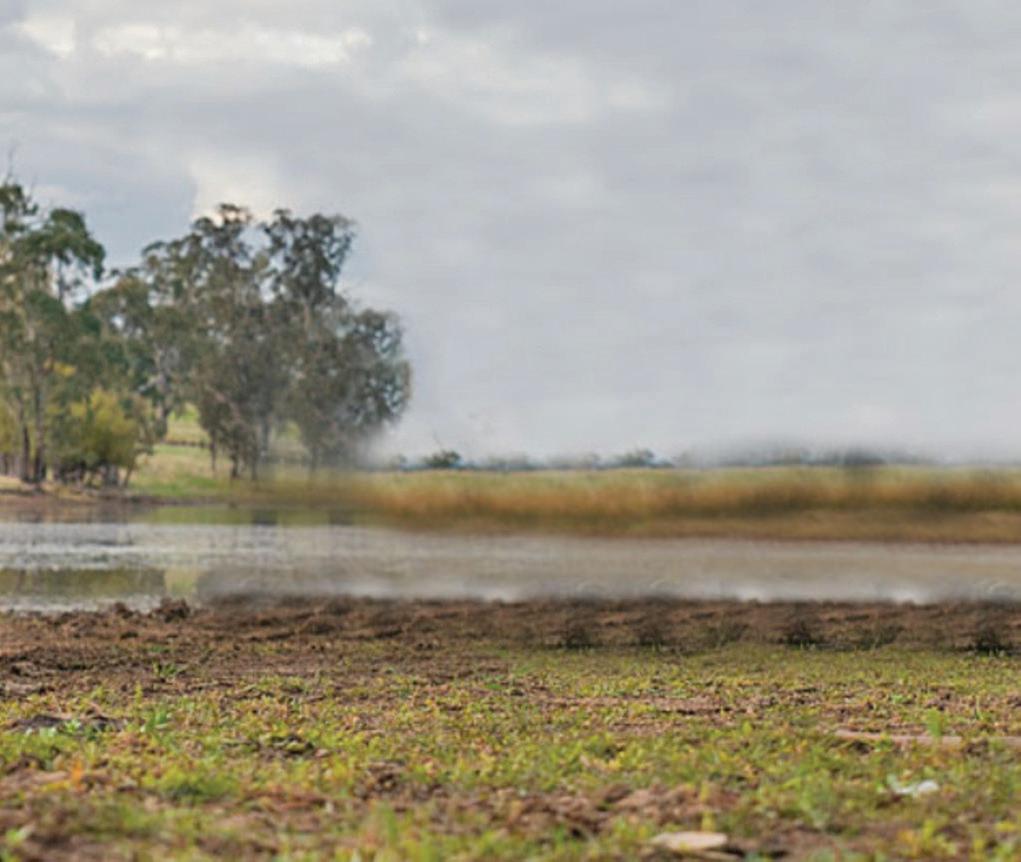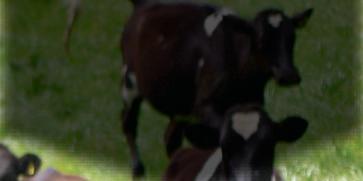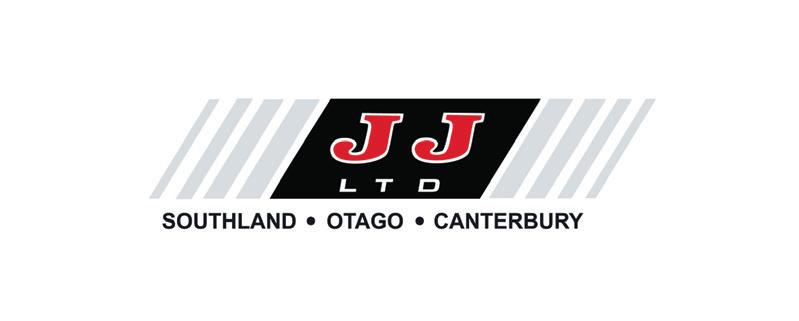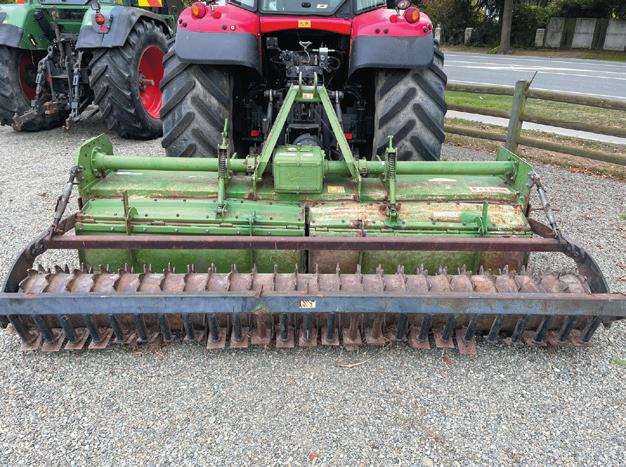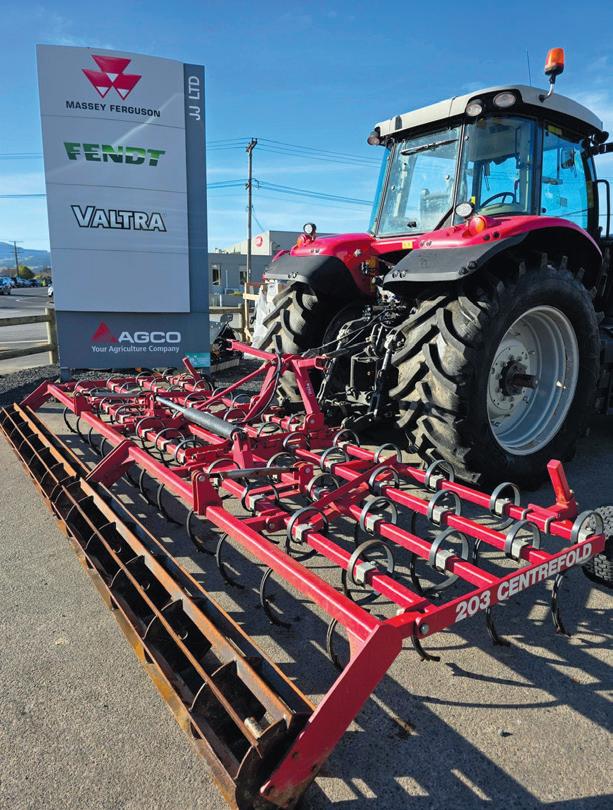

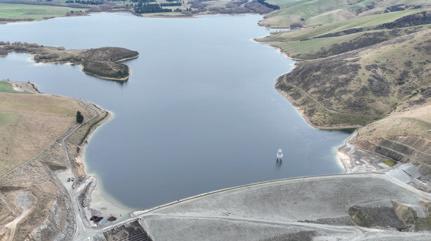















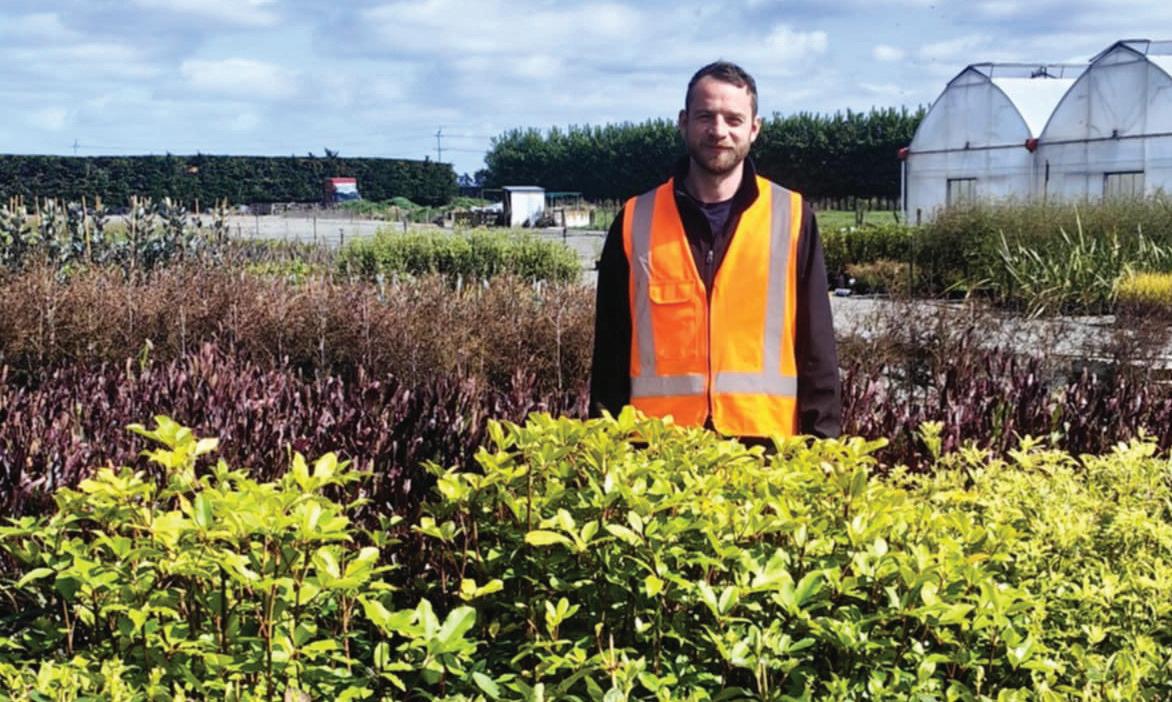




















Jake Linklater from the Nova Trust nursery, Nova Natives in Templeton, has taken out the 2025 Young Plant Producer of the Year title.
] by Kent Caddick
This prestigious award celebrates dedication and innovation in the plant production industry and this year is the second in a row in which the title has gone to a Cantabrian following Amberley nursery worker Anna England’s win in the 2024 competition.
The Young Plant Producer event tests competitors on the skills needed to run a successful nursery.
This year five finalists undertook two days of challenges at Lincoln University, where they were tested on their skills in finance and dispatch, biosecurity, plant propagation and identification, tool maintenance, agrichemical use and irrigation.
The judges looked for individuals who could make a real difference in the industry, going beyond great skills to also include leadership and passion for plant production.
The judges said all the contestants per-
formed extremely well and it was a close call between all five, but Linklater was able to take out the top spot.
Linklater is the nursery manager at Nova Natives, which is a social enterprise and operates alongside the Trust’s addiction treatment and recovery programmes. Working in the nursery helps prepare the Trust’s serviceusers for life beyond treatment, through the development of life and employment skills.
PAGE 2














Alliance Group has secured greater access for chilled beef exports to China, following approval for two of its processing plants to supply the market.
] by Kent Caddick
The company’s Levin and Mataura plants have received certification to process and export chilled beef to China, strengthening Alliance’s ability to meet growing international demand.
General manager for safety and processing at Alliance, Wayne Shaw, said this was not only an excellent outcome for the important China market, but it also strengthens our global options.
The company has already successfully shipped its first load of chilled beef from its Levin plant, which cleared customs in China in early January.
A shipment from Mataura has arrived in China, further expanding the company’s foot-
print in the premium chilled beef sector.
“China remains a significant market for New Zealand red meat, with strong demand for high-quality, grass-fed beef,” Shaw said.
“The approval of additional processing plants gives Alliance greater flexibility in our supply chain and the ability to respond more effectively to market opportunities.
“It also allows us to optimise processing capacity across our network, providing better outcomes for both our farmer shareholders and our customers.”
He said the move aligns with Alliance Group’s long-term beef strategy.
“We’re continuing to invest in expanding our beef processing capabilities, including at our Levin plant, and driving growth in our premium beef brands.”
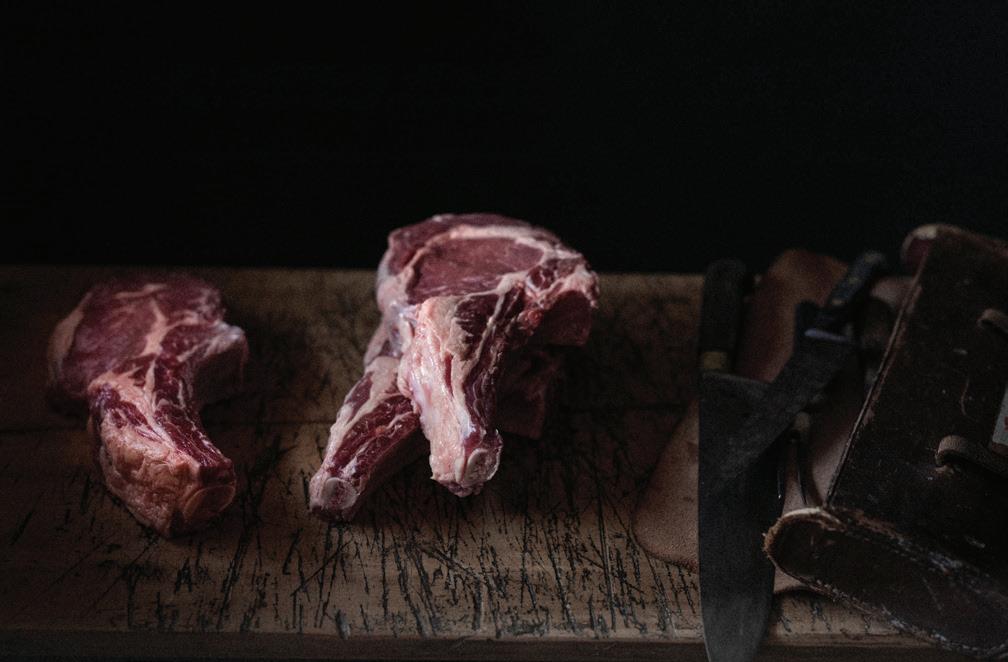






His role as a young leader in the plant production industry is one he takes seriously and one he wants to develop further.
“Over the next few years, I hope to become a better and more natural leader.
enough to be involved with everything from propagation to dispatch which makes my role incredibly diverse.”
Along with the Young Plant Producer trophy, Linklater won a 12-month programme of mentorship support plus a $4000 fund to advance his career in plant production.








“We have significant development potential here at the Nova Trust nursery and I would like to build a team who are passionate to learn about plants and the industry,” Linklater said.
It was his second time entering the competition after first competing in 2023.
He will also take part in the Young Horticulturalist of the Year award in November where he will compete against finalists from the entire horticulture industry, vying for a prize pool worth more than $20,000.







“I entered again as I want to challenge myself and meet other like-minded people from different parts of the industry.
“I have had a rewarding career in the industry so far and hope to continue that well into the future.

“At Nova Trust’s Nova Natives, I am lucky
Last year Anna England who won the 2024 Young Plant Producer of the Year title went on to take out the Young Horticulturalist of the Year award
Another Cantabrian Johnnie Clay from Southern Woods Nursery near Rolleston finished third in the 2025 Young Plant Producer of the Year competition.









Vital upgrades to South Canterbury’s Opuha Dam and irrigation scheme will be carried out thanks largely to a funding boost from the Government’s Regional Infrastructure Fund.
] by steve Attwood
The funding announcement from Minister for Regional Development Shane Jones and Associate Minister for Regional Development Mark Patterson signals a significant Government investment in water storage infrastructure, which includes a loan facility of up to $20.8 million to support a critical upgrade of the Opuha Dam.
Opuha Water Ltd (OWL) chief executive Bjorn Triplow said the upgrade will extend the dam’s operational lifespan and strengthen its resilience against climate change and extreme weather events.
“The support will ensure the dam and water delivery infrastructure continues to serve the region effectively for generations to come,” Triplow said.
The programme of work will enhance dam safety resilience by improving protection against erosion, floods, and earthquake damage. It also aims to optimise water storage management and strengthen the system’s emergency response capabilities.
Triplow said a key objective of Opuha’s strategic capital programme is the renewal of critical resource consents due in 2030.
He said significant investments in infrastructure and environmental initiatives are already underway, positioning OWL favourably for these upcoming engagements.
“We welcome the Government’s recognition that the Opuha Water’s infrastructure is a cornerstone of South Canterbury’s economic prosperity.
“Beyond its role in supporting sustainable farming, the dam has catalysed growth in downstream industries, delivering an annual net economic benefit of $315million, to the South Canterbury region.

“It also plays a crucial role in preserving the health of the in-river environment, balancing productivity with ecological care.”
Triplow said the dam was originally constructed in the late 1990s in response to devastating droughts.
“It was a community-led initiative designed to safeguard local livelihoods and to retain a viable environmental flow of water in
is to get an upgrade thanks to funding from the government’s Regional Infrastructure Fund.
the Opihi River, protecting a vital recreation, cultural and water supply resource.
“The Government’s support will contribute toward a major infrastructure enhancement programme planned by Opuha Water. These projects will improve dam safety, manage flood passage, and enhance the reliability of water for the Opihi River and the community.
“Crucially, the dam also manages flood passage, acting as a flood buffer to safeguard communities, and infrastructure from extreme weather events, such as those experienced in 2021.”
Keeping your trees pruned and clear of lines helps us keep the power on for our community
The Regional Infrastructure Fund is a capital fund with the primary purpose of accelerating infrastructure projects, with a focus on water storage, energy, and resilience that will make a difference in the regions.


Vegetation falling on power lines is one of the leading causes of power outages on our network. It also creates a major safety risk.
Hazards from trees that are too close to lines include:
Fire caused by electrical sparking from vegetation coming into contact with lines.
Risk of electrocution for children or anyone climbing trees close to lines.
Risk of electrocution from vegetation becoming electrically live in severe weather conditions.
Trees and vegetation causing power outages.
Tree roots growing around underground cables, damaging the insulation and causing power supply failure.
Trees near power lines are dangerous
The Electricity (Hazards from Trees) Regulations were updated in October 2024. This update includes new minimum safe distances between trees and power lines and a new ‘clear to the sky’ requirement, the new regulations have a grace period that lasts until 16 October 2026.
Trimming trees safely
We recommend you hire trained professionals with the necessary expertise and safety procedures to competently carry out tree trimming.
Contact with a power line can cause:
Risk of electrocuting yourself or others.
Damage to property and other trees.
Damage to the electricity network.
Livestock death or damage.
If you or someone working for you intends to work within 4 metres of power lines, a close approach consent is required from Orion before work commences.
Fines for non-compliance
If a cut or trim notice is given to you and you fail to have the tree trimmed and/or advise us of the time and location of the trim without a reasonable excuse, this is an offence.
This will make you liable for a fine not exceeding $10,000. If the offence continues, you will be liable for a further fine of not more than $500 for every day or part day during which the offence continues.











] Minister for Agriculture
New Zealand’s food and fibre sector is world-class, and this is the decade for New Zealand to lead – not by default, but by design. Our farmers and exporters are ready for the challenge, and the Government is committed to backing them.
The sector generates nearly $60 billion in export earnings, supports 360,000 jobs, and upholds New Zealand’s reputation for premium, safe, and sustainable production.
However, the opportunity ahead is even greater. As global demand rises and technology advances, the real question is not whether we can compete, but whether we will be ambitious enough to lead.
The future of our economy will depend on both value and volume, and no sector is better positioned to drive that growth than food and fi bre. But staying ahead requires ambition, investment, and relentless execution.
We need to be more productive, innovative, and connected to the markets that matter. This includes finding smarter, more cost-effective ways to meet environmental and climate obligations while continuing to increase output.
The Government’s goal is clear: to double the value of New Zealand’s exports in 10 years.
To achieve this, we are focusing on unlocking productivity, accelerating innovation, and clearing the regulatory and capital bottlenecks that have hindered growth for too long. Confidence rebuilding on the farm In the past, over-regulation, compliance creep, and anti-farming rhetoric undermined confidence and stifled investment in the primary sector.
But the situation is changing, and so is farmer sentiment. The latest Federated Farmers Confidence Survey showed the largest uplift in five years as farmers begin to see the tangible benefits of their hard work. This

We are focused on enabling more permissive land-use, so farmers can adapt and diversify based on opportunity, not red tape.
We’re also driving a complete overhaul of the Resource Management Act to create a regulatory system that enables enterprise while meeting environmental obligations intelligently.
The Government is committed to building long-term investment partnerships with the sector.
In Budget 2025, we launched the Primary Sector Growth Fund (PSGF), a $246 million initiative to co-invest in high-impact innovation. The first project, Resilient Pastures, a seven-year, $17 million program to breed cli-
mate-tolerant pasture systems, is already underway.
We’ve also introduced the Investment Boost, which allows agribusinesses to immediately deduct 20% of the cost of new assets from their tax bill, allowing firms to reinvest faster and drive economic growth.
While we’ve been resetting the domestic policy environment, we’ve also focused on unlocking global opportunities for producers.
In the past year, New Zealand’s exports to the EU have increased by over $1 billion since the Free Trade Agreement (FTA) came into force. Similarly, the UK FTA has led to a 21% boost in exports, worth an additional $644.4 million.
Additionally, we’ve signed a Free Trade Agreement with the UAE, which unlocks a
‘We
are focused on enabling more permissive landuse, so farmers can adapt and diversify based on opportunity, not red tape.
$500 billion market, concluded negotiations with the Gulf Cooperation Council (GCC), and launched negotiations with India, a long-term growth market for New Zealand.
The challenge is set
New Zealand’s position in the global food economy requires focused ambition. Our agribusinesses are already leading in grass-fed production, precision technology, and valueadded processing.
The Government’s role is to support, enable, and amplify this progress —clearing the roadblocks and scaling success.
The challenge is clear: maintain our leadership by being ambitious, investing smartly, and providing clear direction. We have the talent and capability; now we need the ambition to remain at the top of the global food and fibre sector. This is our decade to lead.








Recently the news was smothered with the fact that one third of farmers did not have a succession plan in place.
Really? After I had got over the fact that someone had thought of doing such a survey, and that they used time and resources to do it I went deeper into what it all said.
For generations family farms have been handed down from one generation to the next.
In many cases the oldest son took over the farm and his brothers and sisters were left to seek their own fortunes while the parents lived on the farm in the cottage and were looked after by farm incomes.
The next step seems to be that a son would buy the farm, and the proceeds were split to provide for the parents in a retirement village while the other children got their portion of the proceeds.
The succession plan was to have enough funds available for the transaction.Trusts and companies suddenly became vital. A method that seemed to be better for family unity.
So why are such plans no longer a part of
our rural scene? Perhaps the traditional family farm has gone.
We now seem to have huge companies who have bought up our farms and they are run by managers and share milkers.
Where a family could run a farm successfully and make a living, modern methods of farming demand a career structure rather than the old true and tried style.
I suppose dairying has caused a lot of swings. When Synlait was set up as a farmbased training establishment we were all amazed that no-one had thought of it before.
A chance for people to learn about the industry and set them on the path of farm ownership that wasn’t available until then.
Gone were the days of young men shearing sheep for several years to raise a deposit and farming through a haze of debt.
In a nutshell, farming has changed dramatically and those of us who lived through the simple days when farming was a lifestyle rather than a complicated business lived through a great era.

Steven
] by Kent Caddick
Rink, who is production manager for Oakley’s Premium Fresh Vegetables in Southbridge, pitched his skills against three fellow contestants to take the title last month.
The Canterbury competition was the first to be held in the region for several years, so all the contestants were first time entrants.
He will now go on to compete against six other regional winners in the national Young Grower of the Year competition in Christchurch in September.
Rink aged 30, grew up in Cape Town, South Africa, where he gained a degree in conservation and ecology from the University of Stellenbosch before heading to New Zealand in 2019 for what he planned to be a year of backpacking.
He was helping out at a wholesale nursery operation in Tauranga, overseeing the propagation and irrigation departments. However, when Covid struck in 2020, he found himself in lockdown in New Zealand, after deciding not to travel back to Cape Town.
“When lockdown ended, I went off and spent the rest of the year backpacking around New Zealand. I was fishing off a jetty in the Marlborough Sounds when I heard I’d got a job as a production assistant at Oakley’s,” Rink said.
“It was very different to my previous experiences in horticulture. Before I’d been


driving older manual tractors whereas here at Oakley’s we have large scale, tech-driven machinery.
“We grow a lot of vegetables including broccoli, pumpkin and beetroot. We are known for our potatoes, we have our own brand, Golden Gourmet. We also grow rotational cover crops.”
The Young Grower of the Year competition celebrates the success of young people in the industry as well as encouraging others to consider a career in horticulture. Entry is open to both commercial fruit and vegetable growers from across the regions, up to the age of 30.
Regional organisers host and run the regional competitions independently, with Horticulture New Zealand (HortNZ) hosting the final in a different part of the country each year.
Rink said the Canterbury regional competition was an amazing event.
“The contestants were a great crew, and I can’t speak highly enough of the module coordinators.
“The modules were a mixture of the basics that we all need to know and also stuff that really stretched us. I had thought it would be nerve wracking, but it turned out to be really enjoyable.”
He said he feels the competition plays an important role in highlighting the young talented growers coming through the sector as

well as exposing contestants to wider aspects of the industry.
“The sector has so many facets and you don’t see all sides. You might be growing things, but you aren’t necessarily dealing with the marketing and financial aspects of the crops, the competition encompasses a lot of that.”
His advice to other young people considering a career in horticulture is to “jump in and try it”.
“The industry is so broad and there are so many different opportunities. We have people here who love growing things, and we have people who just love operating the big machinery. Come and see what there is and you will find the pocket for you.”
Runner up in the regional competition was Brooke Chambers who is part of the operational team for Farm Right’s orchard development in Canterbury.
HortNZ chief executive Kate Scott it was great to see the Canterbury competition back, celebrating the fantastic array of young grower talent in the region.
Information for this article was supplied by Horticulture New Zealand. For more go to: www.hortnz.co.nz



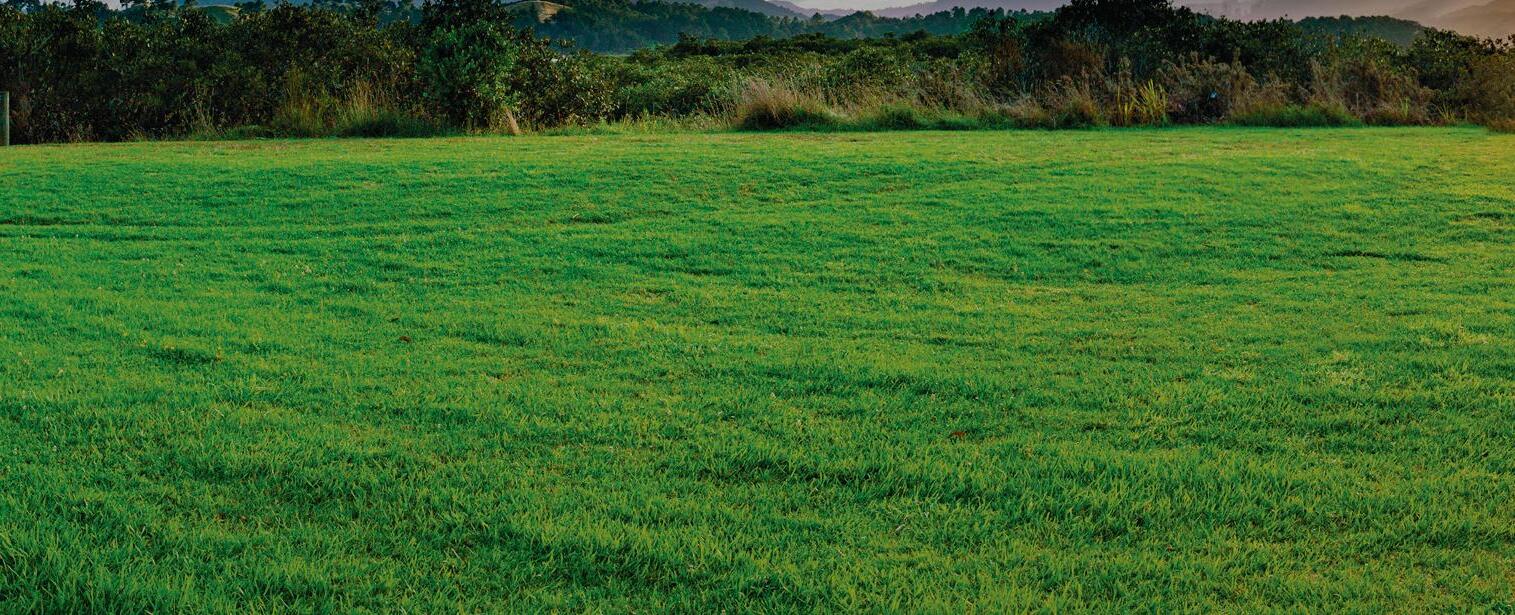













] with Jo Luxton
Labour spokesperson
for Agriculture

When Labour launched New Zealand’s first Rural Health Strategy last term, we were clear about the need to deliver better outcomes for the people who live and work beyond our cities.
Our strategy aimed to address rural health in a way that was led by communities, with a focus on workforce development, investment in infrastructure such as emergency transport and flood protection, and support for rural wellbeing and resilience programmes.
Rural health is about more than hospitals and ambulances. It’s about access to mental health services, well-resourced GPs, funded public transport for medical appointments, youth counselling, home visiting programmes – and even strong digital connectivity and well-maintained roads.
Our strategy laid the foundation to meet the broad range of challenges that rural communities face when it comes to health.
It meant ensuring there were counsellors within reach, a doctor who wasn’t hours away, and a reliable internet connection. It meant providing our young people someone to talk to, and our older generations the dignity of care they deserve.
But despite this Government’s focus on farmer mental health, major challenges remain in fully meeting rural and frontline needs. Rural GPs are being stretched thin and are expected to deliver more with fewer resources.
And National’s decisions like funding telehealth providers at more than three times the rate of family GP practices show questionable priorities and a worrying lack of commitment to community-based care.
Our mental health system is also under strain. According to the Mental Health and Wellbeing Commission fewer people are ac-

cessing specialist mental health services – it’s not because the need is less, but because the services simply aren’t there.
The Royal Australian and New Zealand College of Psychiatrists and community groups have highlighted alarming workforce shortages: 650 mental health vacancies and 130 psychiatrist vacancies.

And again, the Government’s questionable decision to create an innovation fund with a restrictive eligibility criteria (a minimum of 80 staff) has excluded many smaller mental health providers. It threatens the viability of grassroots organisations that are vital to our rural communities.
These are choices that this Government has made, choices that are making rural life harder. To truly support better access to healthcare and better outcomes for rural New Zealand, National must build on the foundation of Labour’s Rural Health Strategy. That means meaningfully addressing workforce shortages and providing fair, reliable funding for our community providers.




Some mistakenly imagine that Field Days for a Green MP is something of a bear pit. We found the opposite to be the case.
] with steve Abel
] Green Party Spokesperson for Agriculture
The candid exchange of opinions and the ability to share ideas and confront differences – and work to find common ground – is vital to a healthy society.
We should never take for granted that in this country we can have political differences without coming to blows. In fact, we should fiercely uphold this principle.
When speaking at the Advocacy Tent, at the invitation of Federated Farmers, I expressed that farmers are vital for our food and fibre production, and they must be able to farm in a way that ensures a decent living for them and their families.
We also need to produce food in a way that doesn’t harm the necessities of clean freshwater, thriving local wildlife, and a stable climate.
Everyone has a right to safe drinking water and would prefer that their local river was healthy enough to swim in.
I am a keen advocate for the renaissance of wool as a phenomenal superfibre that has a long and deep cultural and economic importance to New Zealanders.
Furthermore, it is a direct solution to the scourge of disposable plastic – including clothing – that chokes our oceans and landfills and now pervades our food chain to the extent that we have microplastics in our brains.
Wool is New Zealand’s-own solution to this global plastic problem and there are very exciting innovations. Government needs to back wool for the win.
I outlined the Green commitment to remove pine forestry from the Emissions Trading Scheme. Having forestry in the ETS creates a market distortion that sees high country sheep and beef farms lost to pine plantations which is both bad for farmers and conservation.
The Luxon Government’s latest moves to address this problem are weak and increase complexity which farmers don’t want. Offsetting greenhouse pollution to pines is a false economy that must end.
As part of our Jobs for Nature policy the Greens will also properly fund, to the tune of $125 million over four years, the wilding pine problem that plagues both farm and conservation land.
We’ll also set up a one-billion-dollar biodiversity fund using money from the ETS to pay farmers for permanently protecting biodiversity on their land.
These are just some of the Green approaches that farmers showed support for. Alongside Marama Davidson’s “Right to Repair” Bill and my own Bill to stop the importation of animal products that don’t meet New Zealand welfare standards, we found considerable common ground.
‘We should
never take for granted that in this country we can have political differences without coming to blows. In fact, we should fiercely uphold this principle.
Despite a wet winter, farmers in the Hurunui district are showing good progress in managing winter grazing.
] Article supplied by ECan
That’s the feedback from Canterbury Regional Council (Environment Canterbury) land management advisors following recent aerial monitoring flights.
The annual flights provide a cost-effective way to assess winter grazing practices across the region, which can pose risks to water quality if not managed well.
Acknowledging the challenging weather, water and land northern team leader Andrew Arps said his team were encouraged to see many farmers strategically managing winter grazing in line with the national rules, including buffer zones to protect waterways and critical source areas (CSAs) fenced and left in pasture.
“Seeing the improvements from the air gives us a unique perspective on how well farmers are adapting to both regulatory requirements and environmental challenges,” Arps said.
“From that viewpoint, we can decide whether it’s beneficial for a land management advisor to follow up with a landowner on the ground.”
He said a highlight was seeing the effort farmers had put in to protecting waterways with riparian planting.
“There’s some excellent mahi (work) going on in this space and it’s encouraging to witness the proactive steps being taken to safeguard our land and waterways.”
Other good practices observed included grazing from the top of slopes down, movable feeders and troughs, back-fencing to protect wet ground and grazing during wet spells.

Arps said in a wet year, protecting CSAs is vital.
“Natural features like gullies and swales can channel runoff loaded with sediment, nutrients, and contaminants directly into waterways, harming ecosystems and endangering the health of people and livestock that depend on clean drinking water.
“From the air it can be obvious where crops have been sown through critical source areas as they will often be stunted or yellow as they’ve got wet feet,” Arps said.
“Now’s the time to check out where the water is running through the paddocks, as
Driveways
Earthquake Repairs
New Home Specialists
Patios & Paths
this could indicate a critical source area that may not be obvious in a dry year.
“They can be marked on your farm map and winter grazing plan for future management.
“Some farmers even go out with temporary fence standards to mark them, which helps contractors who may do the spraying, cultivation or fertiliser spreading in spring.”
When it comes to next year’s paddock selection, Arps encourages critical thinking.
“Not every paddock will be suitable for winter grazing, particularly where there are multiple CSAs or tricky soils that may not
handle higher animal traffic, or those lighter soils prone to leaching nitrate.”
He said with wet conditions showing up all the challenges, now’s a good time to think strategically about the paddocks you may already have ear-marked for crop rotation.
“Ask yourself: Is the slope manageable? Can I shift breaks easily? Will this paddock need extra care to meet good practice and comply?”
Find out more on the Farmers’ Hub at ecan.govt.nz/ winter-grazing

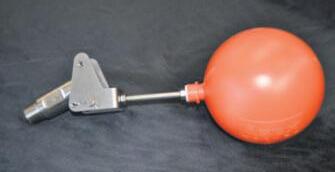


News and views that matter to rural people






Ronald W Angland & Son
This was partly as a result of the murders which happened in Christchurch when the mosque was attacked some years earlier. It was also intended to assist the Police in preventing the use of firearms for criminal activity.
It is hoped that the innovations will prevent the risk of firearms falling into the wrong hands when firearms are imported, manufactured and bought and sold.
Firearms Licensees will need to contact the Registry and keep their records up to date when they apply for a licence, change their address, sell, purchase, manufacture an item which is covered by the legislation, report the theft or loss of their guns, import or purchase ammunition or enforcement action by the Police.
When an owner is involved in any of the above contacts the Registry they will be required to register all of the arm’s items which they have in their possession at the time.
The Registry is required to hold details of the owner’s licence, their contact details, secure storage locations and details of any dealer’s business.
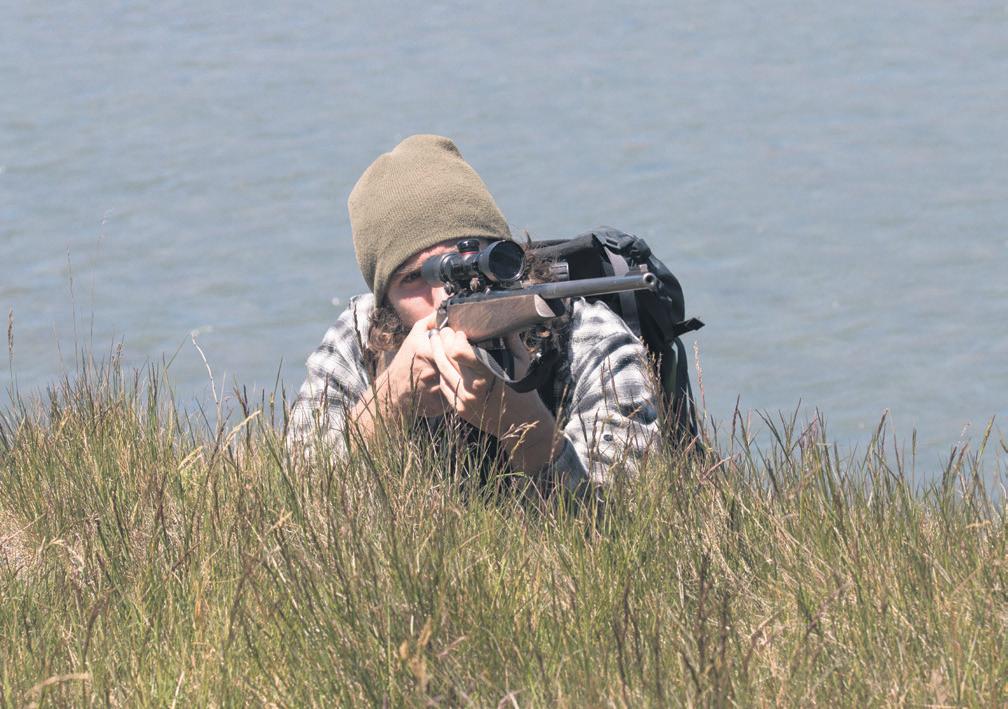
The information held by the Registry will also be made available to ascertain the bona fides of anyone from whom they are purchasing an item.
From 24 June 2025 the sale of ammuni-
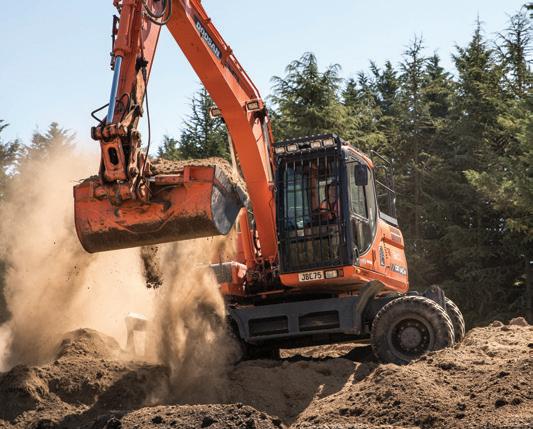


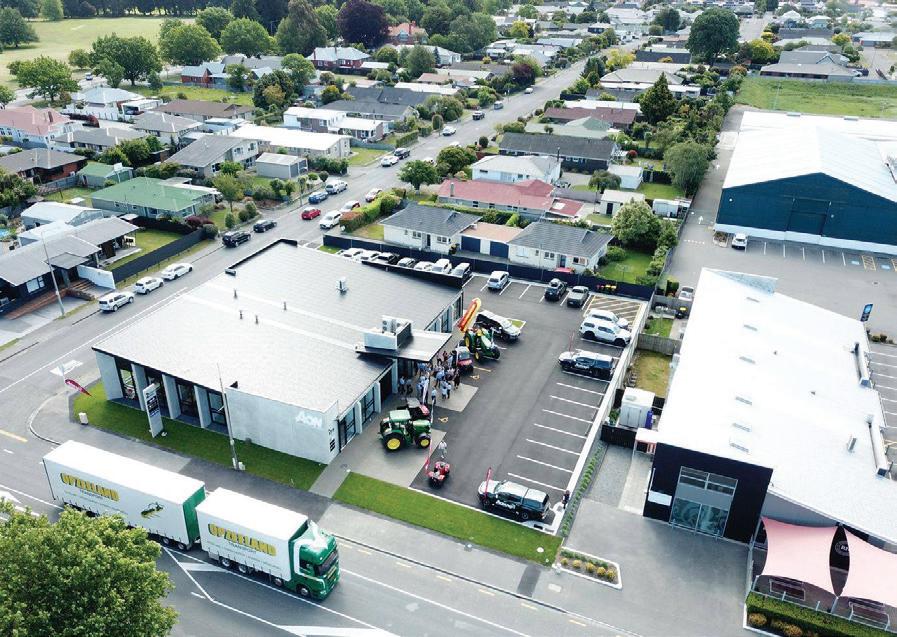

tion will be recorded by the firearms dealers or sellers of ammunition in the Firearms Registry. Any licence holder purchasing ammunition is not required to keep a record of the ammunition purchased but they will need to

provide the dealer with information which the dealer is required to hold in respect to the transaction.
Opponents of the requirement for the sellers of ammunition to hold the personal details of the purchaser are concerned about the safety of their information being kept confidential or stolen and there must be some sympathy with this view. Their concerns have been countered by the assurance that the Registry meets government standards for security of personal information.
There is a possibility that the administration of the Act will be transferred from the Police Department to another Government department, but that decision has not yet been decided.
The Government is also pressing on with the review of the other firearms laws which will take some time. However, it is hoped to have new firearms laws in place before the next Election.
In the meantime, the provisions of the existing laws remain in effect and should be complied with in all circumstances.
this article has been prepared by Bessie Paterson, a partner at Ronald W Angland & son, Lawyers, 2 Chapman street, Leeston




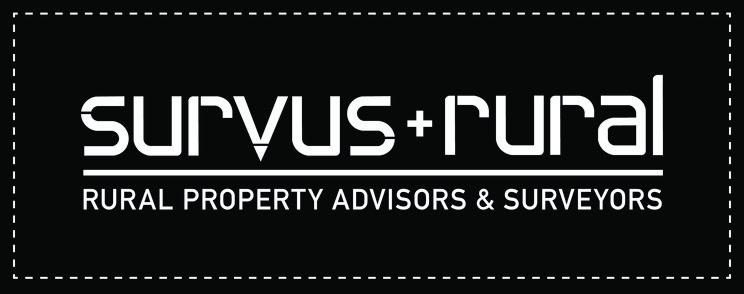

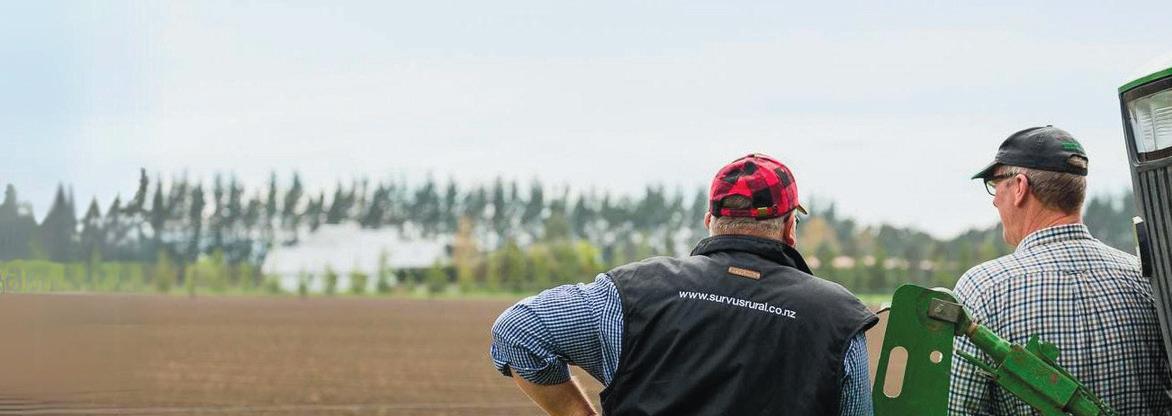







Forsyth Barr

Global markets bounced back strongly over the quarter, with many to date now trading higher for the year.
Although trade tensions sparked a brief period of volatility, markets quickly recovered, culminating in US equities hitting new highs.
In mid-June, a flare-up in the Middle East involving military strikes between Israel and Iran sent oil prices sharply higher. But, like the tariff turmoil earlier in the quarter, the impact on markets proved short-lived.
In the US, attention shifted from President Trump’s trade tariffs to tax reform. In June, the US Republican Party advanced the One Big Beautiful Bill Act (OBBBA), an approximately US$3 trillion+ package aimed at fuelling consumer spending and boosting support ahead of the 2026 midterm elections.
Key proposals include: Making lower personal tax rates permanent (currently set to expire at the end of 2025); Eliminating tax on overtime and service-industry tips; Incentives to encourage business investment.
While OBBBA could provide a short-term lift to US GDP, analysts warn that rising debt and interest costs may weigh on growth over time.
Australasian markets diverge
Australian equities staged a solid recovery in the June quarter. After a weak start to 2025, the S&P/ASX 200 bounced back, posting gains of around +9.5% for the quarter.
In April, the market was caught up in the US-led global sell-off and concerns over a slowing world economy. But as trade tensions eased and the Reserve Bank of Australia signalled faster interest rate cuts, the Australian market rallied strongly in recent months, reaching a new record high in early July.
New Zealand equities faced a tougher run over the quarter. The S&P/NZX 50 Index still rose, but by a more muted +2.7% between April and June, weighed down by global uncertainty and a subdued domestic backdrop.
That said, there are signs of improvement. The New Zealand market is relatively defensive, dominated by quality dividendpaying companies. With the domestic economy slowly picking up and interest rates falling, the foundations for recovery are being laid.
to
low
While New Zealand is likely approaching the bottom of the recent interest rate cutting cycle, that does not mean rates will start rising again soon.
Typically, central banks leave interest rates unchanged for a period once they have finished adjusting them – historically, the Reserve Bank of New Zealand has kept the Official Cash Rate (OCR) unchanged for anywhere between six months and three years after reaching cycle lows.
The first half of 2025 has certainly tested investors’ resolve – from trade war shocks to volatile economic data and geopolitical flareups. Periods like these can be unsettling, but it is important to maintain perspective.
History shows that sticking to sound in-
vestment principles is the best course, especially when markets are volatile. Diversification is important: a mix of asset classes and geographies helps smooth out the ride and capture opportunities wherever they arise.
If you would like to review your investments or discuss the market outlook in more detail, please get in touch.
this article was prepared as at 30 June 2025 and provides market commentary for the three-month period ending on that date. Andrew Wyllie is an Investment Adviser and Forsyth Barr’s Christchurch Manager. He can be contacted regarding portfolio management, fixed interest, or share investments on 0800 367 227 or andrew.wyllie@forsythbarr.co.nz. this column is general in nature, has been prepared in good faith based on information obtained from sources believed to be reliable and accurate, and should not be regarded as financial advice.


‘Periods like these can be unsettling, but it is important to maintain perspective. History shows that sticking to sound investment principles is the best course, especially when markets are volatile.

When you are thinking about your investment options, talk to Forsyth Barr To get personalised investment advice and portfolio management specific to your investing needs, talk to Investment Adviser Andrew Wyllie in confidence on (03) 365 4244 or email andrew.wyllie@forsythbarr.co.nz







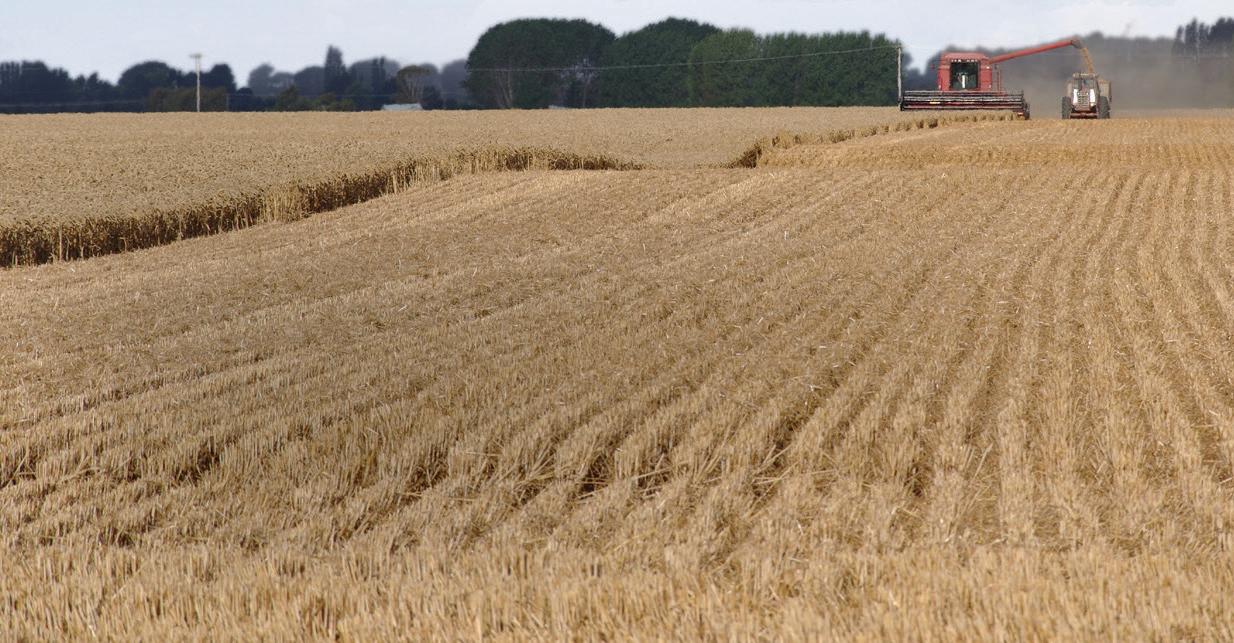
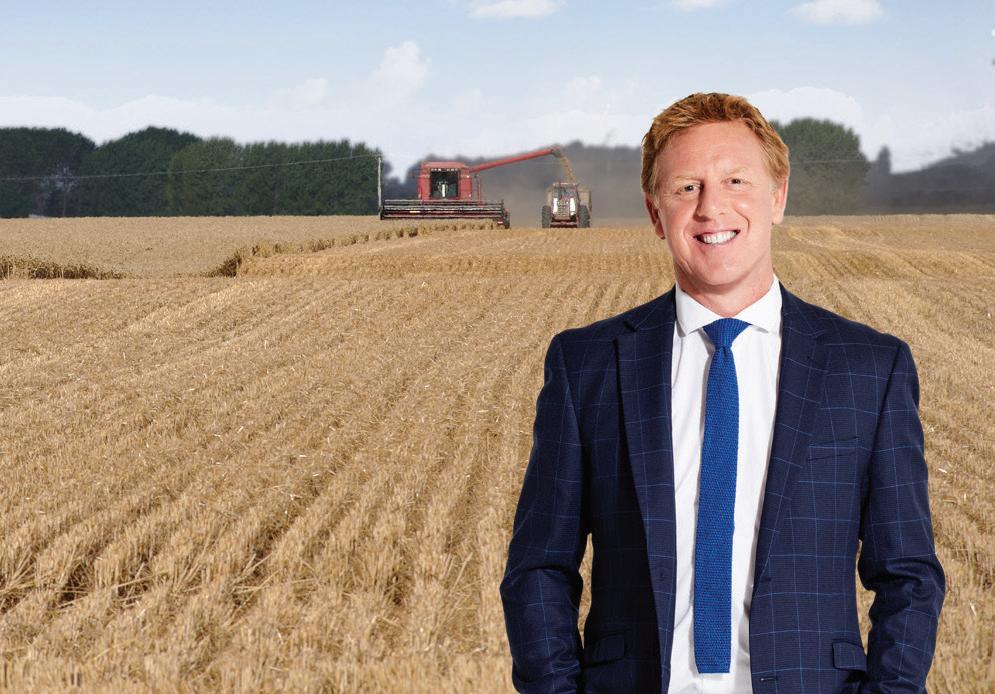



Scholars: Last year’s sIAFD & Lincoln university scholarship recipients were (from left): Cameron Brans, Jessica Quinlan, Jorja Weld, Daniel Schat (SIAFD Executive Member), Claire Donelley, georgia Higinbottom, and Cameron Beck.
South Island Agricultural Field Days (SIAFD) is now accepting applications for its scholarships through Lincoln University, offering $10,500 to up to six exceptional students who are poised to become the next leaders in the primary industries.
] by Kent Caddick
With applications closing on October 31, SIAFD has broadened its scholarship scope for 2025. Up to three scholarships will be awarded annually: one earmarked for a member of the Christchurch District of New Zealand Young Farmers (NZYF), one for any other NZYF affiliate from across the region and newly introduced last year, a scholarship available to a non-NZYF member undertaking full-time studies at Lincoln University.
SIAFD executive member Daniel Schat
said the scholarships weren’t just about giving financial support.
“It’s about backing the drive and determination of the people who’ll be working in the agricultural industry in the future.”
He said last year’s recipients, Cameron Brans, Jessica Quinlan, Jorja Weld, Claire Donelley, Georgia Higinbottom and Cameron Beck, exemplify academic excellence and promise within their communities.
“Their potential contributions go beyond mere accolades as they prepare to tackle challenges facing modern agriculture head-on.

“Backing education now means we’ll have smart, practical problem-solvers for whatever comes next,” Schat said.
“We’re not just sharing knowledge, we’re helping grow the kind of wisdom that works across every part of New Zealand’s farming landscape.”
He said the latest step aligns seamlessly with SIAFD’s enduring mission embedded in its constitution: fostering educational growth alongside personal skill development crucial for anyone embarking on or advancing within farming vocations throughout New Zealand.
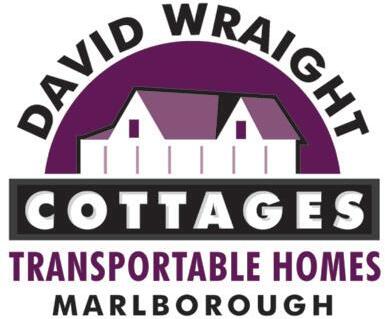

To apply for a scholarship visit www.lincoln. ac.nz/study
Held every two years in Kirwee, the south Island Agricultural Field Days (sIAFD) is Canterbury’s largest and most respected agricultural event, attracting over 600 exhibitors from across New Zealand. It showcases the latest innovations, machinery, and technology developed to tackle real-world challenges faced by farmers and rural professionals.
Visit www.siafd.co.nz for more information.




When the pressure’s on, it’s all about
] Article supplied by Farmstrong
For Taranaki dairy farmer Kane Brisco, it means grabbing a sheet of paper and dealing in facts, rather than emotions.
“One of the first things I do when I’m feeling overwhelmed by lots going on is to get stuff out of my mind and onto a bit of paper,” Brisco said.
“In our minds we tend to think about the future a lot and often head to the worst-case scenario.
“But when you write stuff down, it takes all the ‘spin’ out of your head, and you can just deal in facts.
“Once you put the facts down on a piece of paper, it’s easy to clarify what you actually need to do. It identifies your next job at hand. I find that instantly takes that negativity out of my mind.
“It also means you can embrace a challenge as an opportunity to step up, rather than viewing every challenge as something that’s holding you down and making your day crap,” Brisco said.
“If you can take some of the emotion out of a situation, you make far better decisions. These days I make sure I always deal with facts, rather than just what I’m feeling.”
Article published by permission of Farmstrong. For more on how Farmstrong can help to keep you and your family mentally well balanced go to: farmstrong.co.nz
staying focused and calm so you can think clearly and make good decisions. But how do you achieve that?












I recently wrote about Co Enzyme Q10 (CoQ10). I regularly have contact from readers about CoQ10, especially from those wanting help with the side effects of statin cholesterol lowering medication.
Studies show that statins can reduce circulating CoQ10 by as much as 50%. The side effects are so common they are called Statin Myopathy and Statin Neuropathy.
The main side effects are muscle and tendon pain. Muscles and nerves have huge energy requirements and reducing cell energy can have devastating effects on muscles and nerves. Reductions in CoQ10 can affect mood, memory and general cognitive function. In most cases 2 months of a naturally fermented CoQ10 will improve muscle and brain function and allow people to get the benefits of the medication without side effects.
The chemical structure of CoQ10 allows it to move high energy electrons within our cell mitochondria where energy is made. CoQ10 collects these electrons and moves them to an enzyme called ATP synthase to make the energy we need.
I recommend CoQ10 for several reasons most commonly for statin support. I also add CoQ10 for those fatigued without medical causes and for those with cardi-
ovascular, autoimmune and neurodegenerative problems. For example, I include at least 200mg for those with Polymyalgia Rheumatica and higher doses for those with MS.
For statin support I use a high-quality naturally fermented CoQ10 and for autoimmune or neurodegenerative support, a mitochondrial support formula that includes high grade CoQ10 with several energy co-factors. The first improvement felt by those with these conditions is usually a lift in energy and general well-being. Those with autoimmune or neurodegenerative problems should be working to a personalised diet and supplement plan complementary to their regular medical treatment. Most people feel a real difference within 3 months.
John Arts (Adv.Dip.Nut.Med) is a nutritional medicine practitioner and founder of Abundant Health Ltd. For questions or advice contact John on 0800 423559 or email john@abundant.co.nz. Join his newsletter at www.abundant.co.nz.






RGT HUSTLE IS A VERY PERSISTENT PERENNIAL RYEGRASS.


Grow high quality feed that persists with RGT Hustle, one of New Zealand’s top performing perennial ryegrasses. ORDER NOW




Buy it. Buy it. Buy it. Buy it. Buy it. Buy it. Buy it. Buy it. Buy it. Buy it. Buy it. Buy it. Buy it. Buy it. Buy it. Buy it. Buy it. Buy it. Buy it. Buy it. Buy it. Buy it. Buy it. Buy it. BOOSTITWITH RGT18ENDOPHYTE

Buy it. Buy it.





Federated Farmers says urgent action is needed to plug a looming gap in treatments to fight native grass grub, which costs the agricultural sector hundreds of millions of dollars each year.
“This is our biggest agricultural pest by a country mile, yet there’s a real risk farmers’ arsenal to fight it will soon be empty,” Feds biosecurity spokesperson David Birkett said.
“It’s pleasing that manufacturers have work developing new chemicals underway. We also need the Environmental Protection Authority to prioritise and fast-track their assessment of any new options.”
Costelytra giveni is a scourge for pasture and lawn, and also a risk to horticulture and native plant root systems.
The two most effective chemicals to control the grub, chlorpyrifos and Diazanon, are both being phased out after decisions by the EPA to ban them.
Chlorpyrifos, a broad-spectrum organophosphate insecticide, is banned in the European Union and Canada, and its use is heavily restricted in Australia. It is in the process of being phased out internationally via the Stockholm Convention, of which New Zealand is a signatory.
The EPA recently consulted on banning chlorpyrifos here. After considering new information, and holding a public hearing, a decision-making committee found risks to people

and the environment, especially to those spraying it, outweighed the benefits.
“We’re pleased the EPA listened carefully to our submission, and decided that for the agricultural sector, the ban would come at the end of an 18-month phase-out period,” Birkett said.
“However, stocks of chlorpyrifos are already very limited and in the face of bans, manufacturers are taking it out of production.”
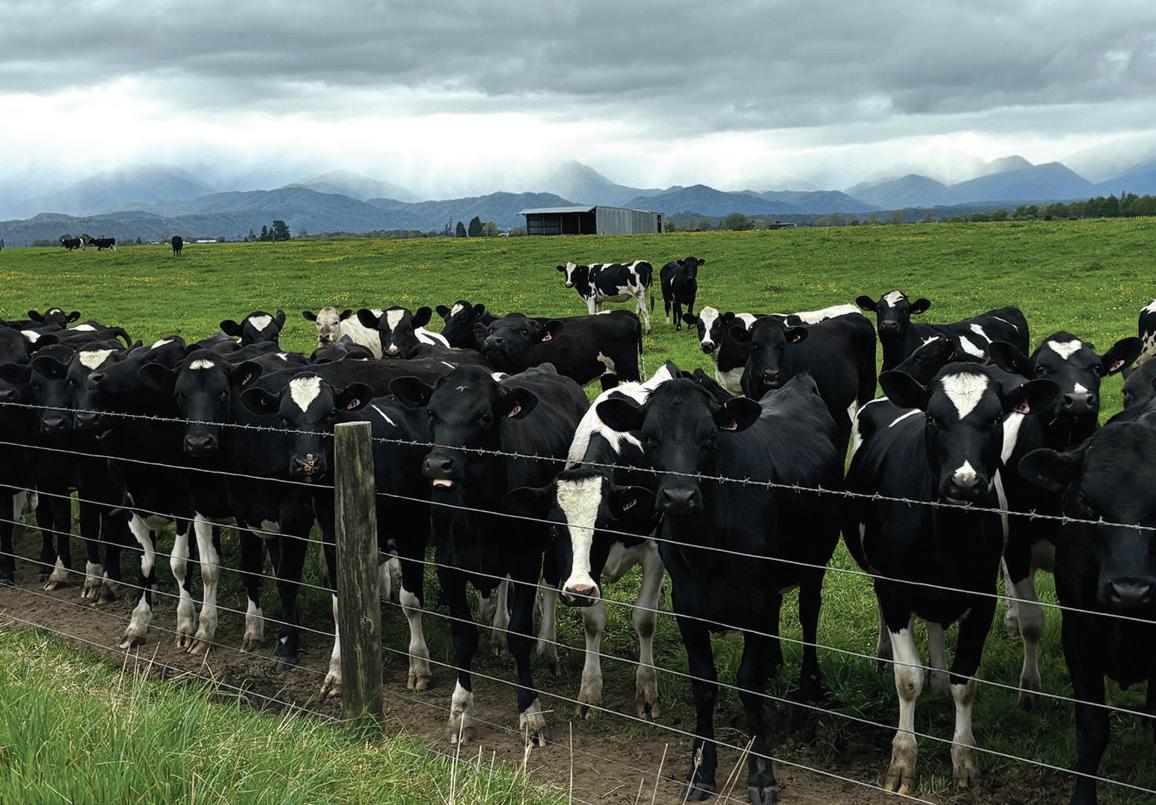

Solution wanted: Federated Farmers biosecurity spokesperson David Birkett says the country urgently needs a new treatment for grass grub following a ban on using two current chemical controls.
any period without an effective control method,” Birkett said.
A 2018 study said native scarab grass grub causes losses of up to $380 million on dairy farms and $205 million on sheep and beef farmers every year, and that was with access to chlorpyrifos.
Birkett said the EPA also needs to play its role swiftly.
“Federated Farmers has been critical of the EPA’s failure to get on top of a backlog of assessment applications for agri-chemicals and animal health treatments.
“We’ve welcomed Government announcements on new measures aimed at streamlining assessment processes, particularly in cases where chemicals are already being used safety in other countries.
The other potent weapon for combating grass grub, Diazanon, will also be banned from 2028.
Federated Farmers understands AgResearch and ag chem companies are well underway with developing a new tool for combatting grass grub.
“We’d really like to see them accelerate that development work. It would be disastrous for food production and our agricultural exports if our farmers are left high and dry for
Kverneland • Overum • Kuhn Lemken• Dowdeswell•Vogel & Noot•Gregoire Besson• Clough • Duncan •Terradisc • Maxitill •Yeoman•Vibroflex •Connershea•Goliath• IHC Sunflower•Topdown •Salford• Kongskilde•Napier •Vaderstad We can also manufacture any point you need!
“But the the EPA also needs to adjust its priorities and not focus on assessing generic chemicals that are already available.
“Their work stream needs to take better account of how far off approvals are for effective replacement products, including biosecurity and pest increase issues, and how much delays would cost the country.”
Birkett said the new chemicals that offer the greatest economic benefits should get priority in the queue, and he would put any new treatment for grass grub in that category.






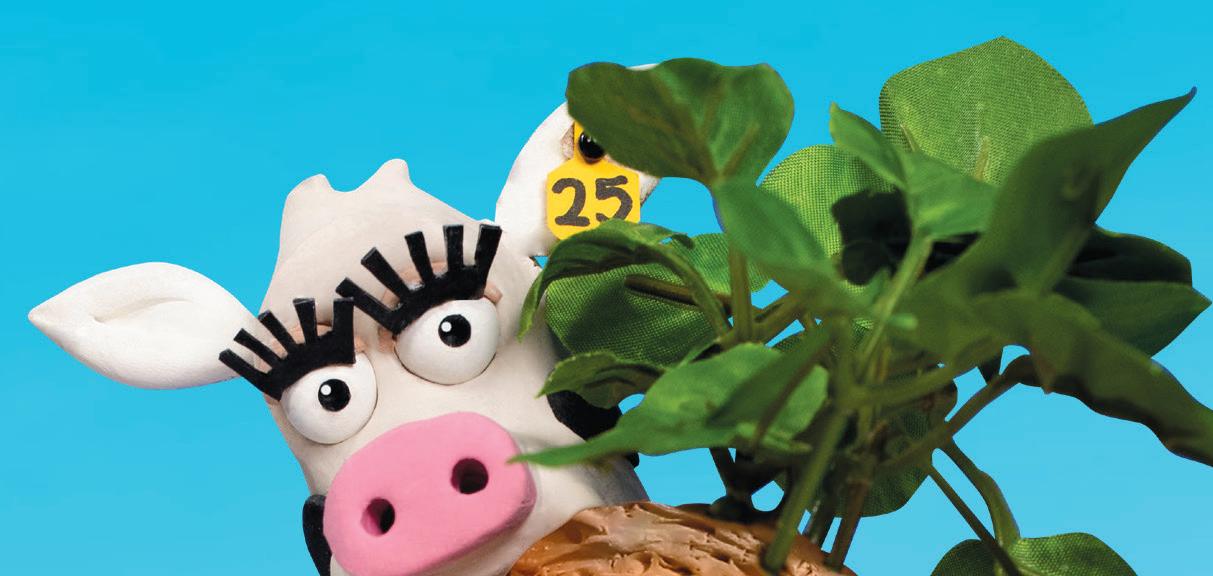

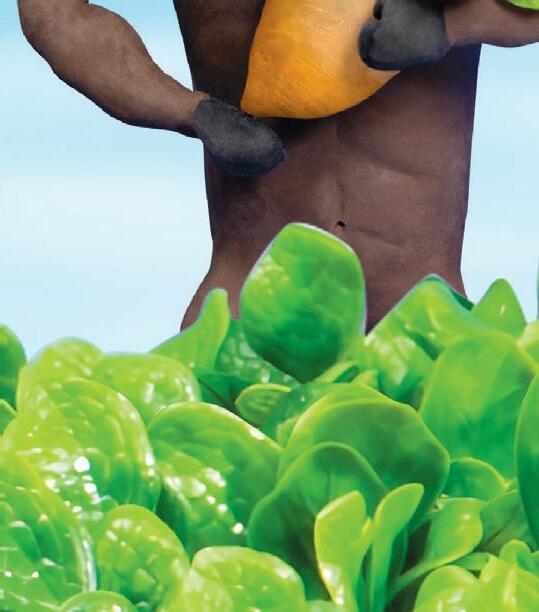






RGT BRIGADIER RGT 1505BV
RGT Brigadier is huge with the most bulb above ground.
RGT 1505Bv grows high yields of nutritious feed to graze.
ORDER NOW


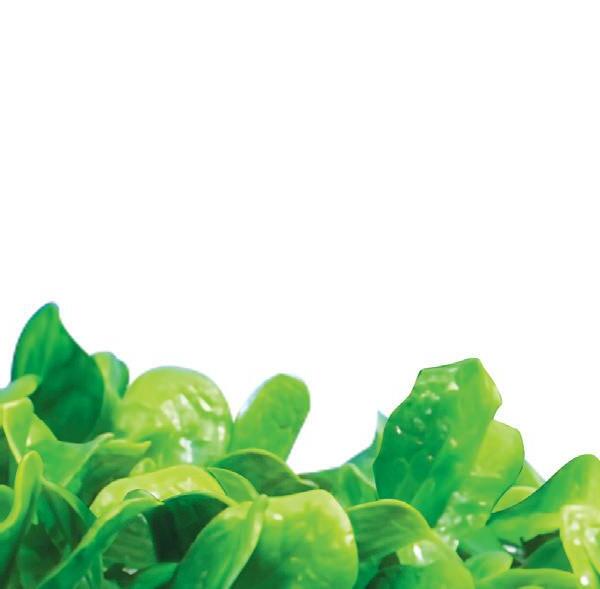



A robotic root-sensing system developed at The University of Queensland is opening up new opportunities for more productive agricultural crops.
The root phenotyping system provides new information on the link between plant roots and yield to identify ways to boost productivity and improve drought resilience.
Dr Dongxue Zhao at the Queensland Alliance for Agriculture and Food Innovation said a purpose-built robot was propelling the Grains Research and Development Corporation (GRDC) invested phenotyping project into the future.
“Given the critical role of the root system to access water and nutrient resources, it is perplexing how little we know about the genotypic diversity of root traits and their effect on crop yield and yield stability,” Dr Zhao said.
“Most root phenotyping methods focus on 2D and 3D visualisations of root architecture traits, usually on young plants grown under controlled conditions in pots or root chambers.
“But because of environmental variables and how plants adapt and respond to them, such studies can’t untangle the whole relationship between root architecture, root function and yield.


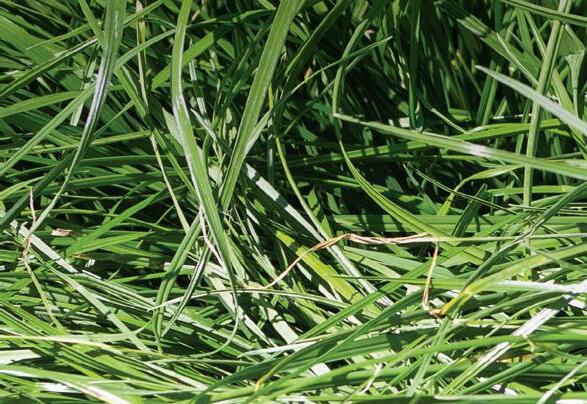

Future farming: the RootBot, which aims to improve drought resilience and boost productivity in crops, being put through its paces by Prof Daniel Rodriguez.
On the other hand, root studies in the field mostly rely on expensive, time-consuming and laborious excavations of the root system.”
Dr Zhao said their approach doesn’t disturb the crop, and its measurements are noninvasive and rapid.
“Now, we can cheaply phenotype a 5-metre-long plot every 8 seconds, meaning that we can assess about 250 field plots per hour.
“The system senses the entire root system within the soil profile, reducing error and maximising our capacity to identify differences between genotypes or agronomic treatments.”
The system involves a range of technologies including an autonomous high-clearance robot called The RootBot, co-designed with AntRobotics in Germany.

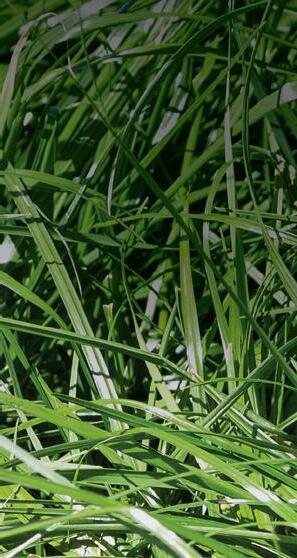



It carries an electromagnetic induction (EMI) instrument and sensors for canopy and root phenotyping.
A data pipeline was developed in collaboration with a service provider of digital agriculture products, streamlining the translation of the technology to industry.
“The technology will allow researchers and providers of digital agriculture services to screen large numbers of genotypes for root traits which likely drive drought tolerance and yield stability,” Dr Zhao said.
“Agronomists could use it to map maximum crop rooting depth and plant available water across paddocks to inform precision agriculture practices.”
Research team member Dr Raul Gimenez

said the possibilities of the system are enormous.
“This technology has the potential to be used not only in root phenotyping, but in combining information from above-ground traits as well to give us a better understanding of what is happening with our crops and how to improve them,” Dr Gimenez said.
“We’re in an era where machine learning and big data are very useful tools, but we need to feed them with information – this robot provides us the means to feed these very powerful models with the information that they need.”
Information for this article was supplied by the university of Queensland. Visit: www.uq.edu.au



















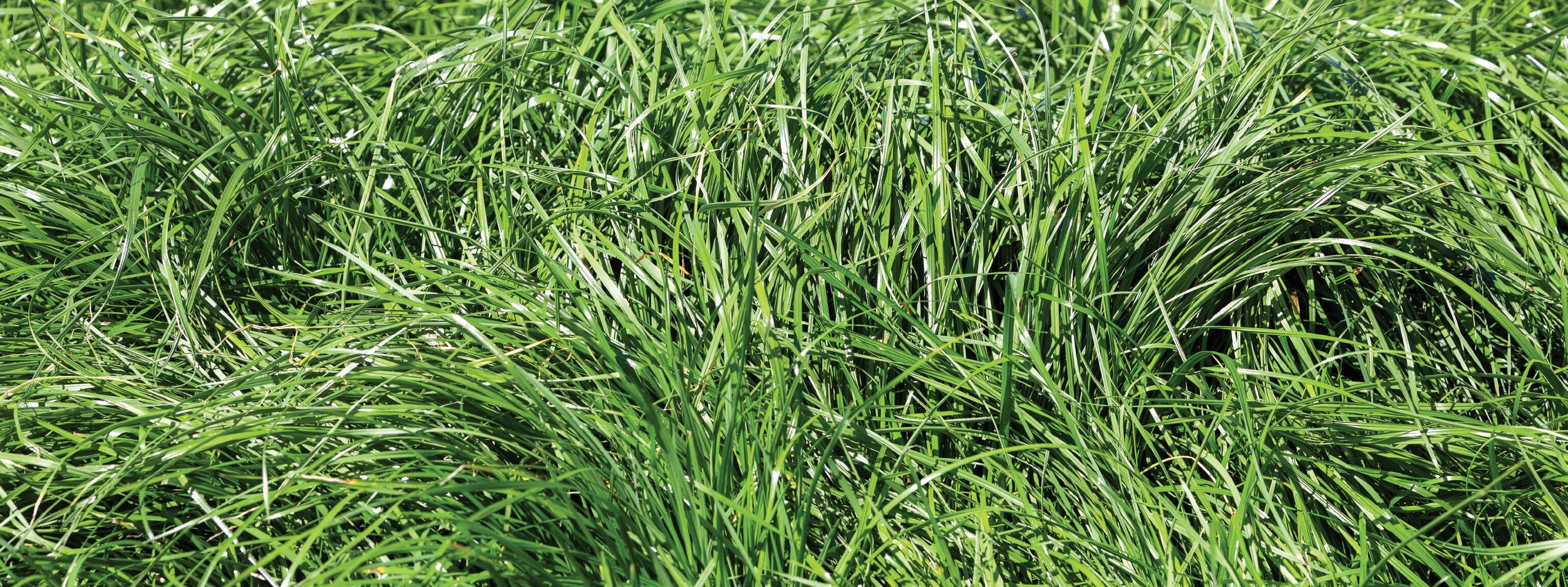
• High annual yields
• Very strong summer and autumn growth
• Excellent crown rust tolerance
• Ideal for dairy pastures, and sheep and beef finishing
Align is a high performance tetraploid perennial ryegrass that adapts intelligently to changing soil conditions. Align is a smart grass that remains dense during wet winter and early spring conditions then becomes bigger, broader and more upright as the season gets hotter. This adaptability ensures year round productivity, delivering resilient, highquality drymatter for modern production systems.


The Environmental Protection Authority (EPA) has approved a rust fungus and a flower weevil to control Darwin’s barberry, a spiny invasive shrub, often found in Canterbury.
] Article supplied by the ] Environmental Protection Authority
Environment Canterbury, on behalf of the National Biocontrol Collective, applied to use two biological control agents to combat Darwin’s Barberry (Berberis darwinii) in New Zealand.
Those biocontrol agents are a rust fungus (Puccinia berberidis-darwinii) and the Darwin’s barberry flower weevil (Anthonomus kuscheli).
Darwin’s barberry is a resilient noxious weed found in disturbed forests, pastures, shrubland and short tussock-land. It is a threat to indigenous ecosystems throughout the country, as well as to pastures where livestock graze. Standard control methods such as herbicides or weeding are often costly, impractical and harmful to the environment.
It is native to Chile and Argentina and was introduced to Aotearoa New Zealand as a garden plant in the 1940s. Fruit-eating birds deposit seeds far from the parent bush, increasing its spread.
The plant can be found throughout New Zealand, particularly in the Canterbury, Otago, and Wellington regions. These biocontrol agents could also be used to target Darwin’s barberry elsewhere in the country.

Threat: Darwin’s barberry, a spiny invasive shrub, is a threat to indigenous ecosystems throughout the country, as well as to pastures where livestock graze.
Both the flower weevil and the rust fungus proposed for introduction are native to South America. All organisms new to New Zealand must receive approval from the EPA before being released into the New Zealand environment.




“The independent decision-making committee approved the introduction of these two organisms following a rigorous, evidencebased assessment,” said Dr Chris Hill, General Manager of Hazardous Substances and New Organisms at the EPA.



“The applicant’s risk assessment showed that these agents are highly unlikely to harm native plants or animals. The weevil does not bite or sting, so there is no health risk to people, and the rust fungus is also benign.”
Dr Hill said the decision followed public consultation, engagement with mana whenua, and consideration of international best practice.







“New Zealand has a strong track record of using biological control agents to manage invasive weeds with minimal impact on native ecosystems,” he said.
In recent years the Environmental Protection Authority has approved other biocontrol agents for weeds such as purple loosestrife, old man’s beard, Sydney golden wattle and moth plant.












Looking for a way to reduce the risk of nitrogen (N) leaching and make the most of the valuable nutrients left behind after winter forage crop grazing? A catch crop could be the answer.
The role of a catch crop, a short-term crop sown between main crops or during pasture renewal, is to absorb residual soil N left after winter grazing, transforming it into valuable animal feed while significantly reducing the risk of nitrate leaching and nutrient runoff.
According to the recent Catch Crops for Cleaner Freshwater project, led by Dr Brendon Malcolm from Bioeconomy Science Institute (formerly Plant & Food Research), these crops can reduce N leaching by up to 60 per cent and sediment runoff by around 40 per cent.
Researchers have been particularly surprised at how well catch crops such as oats and Italian ryegrass can consistently perform when sown in winter, even in some of the toughest of years.
“Even during the coldest winter months, research indicates that delaying sowing by just a few weeks can greatly reduce yield and N uptake,” Malcolm said.
“The key to success is to sow the crop as soon as possible after winter grazing, when soil temperatures are at 4 deg C or above.”
Wet winter and spring conditions can limit sowing opportunities, making flexibility and planning for crops essential.
“Often some surface cultivation is necessary to achieve good soil-to-seed contact, but it is important to not over-cultivate as this can risk soil capping and further losses in wet years.”
Even in the early stage, catch crops are playing an important environmental role.
While slow to establish in winter, often taking three-to-four weeks before they emerge, the root systems are developing three times faster than what is seen above-ground.
“Catch crops sown earlier develop their root systems sooner, allowing them to take advantage of rising soil temperatures. As a result, they can maintain a longer vegetative growth period, effectively capturing more nitrogen during the crucial leaching period,” he said.
“Even when only 20% of growth is achieved by the end of the leaching period around October, more than 50% of the N is already captured.”
Malcolm said although more quantitative research is needed, the project has observed improvements in soil health, including enhanced soil structure, better aeration, improved water infiltration and storage, and a boost in soil life such as earthworms.
Catch crops such as oats then pile on biomass in late spring, often growing at over 200 kg DM/ha/day, offering farmers a valuable return in livestock feed, like green-chop silage.
Canterbury Regional Council (Environment Canterbury) principal farm systems advisor Shane Gilmer is excited to support a project that is showing tangible environmental outcomes when it comes to N leaching.
“From our perspective, catch crops are great tool for mopping up excess N when the leaching risk is high following winter grazing,” Gilmer said.
“It’s a win-win for farmers as catch crops not only help protect our groundwater, but they also improve soil structure and provide high-quality feed for livestock.”

The Catch Crops for Cleaner Freshwater project was supported by MPI’s Sustainable Land Management and Climate Change – Freshwater Mitigation programme, in partnership with Beef + Lamb New Zealand, Plant & Food Research, AgResearch, DairyNZ, the Foundation for Arable Research, Southern Dairy Hub, Environment Canterbury and Environment Southland.
For further information on catch crops and current projects, follow Catch crops for cleaner water on Facebook (@catchcrops).
Runoff: According to the recent Catch Crops for Cleaner Freshwater project, led by Dr Brendon Malcolm from Bioeconomy science Institute these crops can reduce N leaching by up to 60 per cent and sediment runoff by around 40 per cent.
Protection: Catch crops not only help protect our groundwater, but they also improve soil structure and provide high-quality feed for livestock.
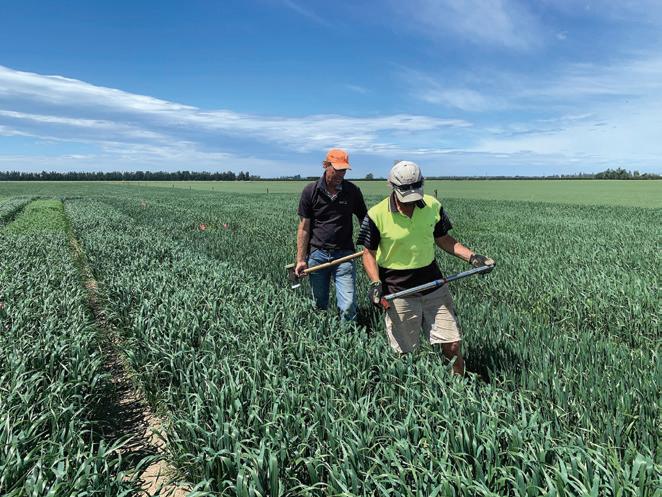






A world-first genome study underway in Canterbury is set to help the country’s billion-dollar wine export industry grow more disease-resistant grapevines and reduce fungicide use in the sector.
] by Mark Devlin
New Zealand farmers consume 3,400 tonnes of pesticides annually. Under the US Environmental Protection Agency’s classification, 5% of herbicides, 60% of fungicides, 8% of insecticides and 72% of plant growth regulators used in New Zealand are suspected carcinogens.
Early findings from the grapevine research suggest that chemical spray use could be cut by as much as 80% in some cases, a potential multimillion-dollar cost saving for an industry under mounting pressure from climate change, which is intensifying disease risk and making traditional spray schedules less effective.
Viticulture is New Zealand’s sixth-largest export industry, generating $2.1 billion in export revenue last year alone, and employing thousands across the country’s key winegrowing regions.
The research aims to identify natural genetic traits that make grapevines more resistant to disease, reducing the need for fungicides and boosting productivity for growers.
Scientists at Lincoln University have installed the MGI DNBSEQ-G400 genome sequencer, a next-generation DNA reading machine, which is enabling them to run tens of thousands of tests on grapevines at a fraction of the time and cost of traditional methods.
Associate Professor Christopher Winefield, Department of Wine, Food and Molecular Biosciences at Lincoln University, said it is the first time the sequencing platform has been used to support wine-related research in New Zealand.
“The wine industry is a major contributor to the New Zealand economy, but it’s also facing huge challenges around sustainability,” Winefield said.
“Vineyards are heavily reliant on chemicals to fight fungal disease and that can come at a cost to the soil microbiome, longterm crop health and the environment.
“With this technology, we’re now able to scale up our studies dramatically and look for grape varieties that are naturally resistant to disease.
“You’re never going to get to zero but by identifying and cultivating naturally diseaseresistant vines, and by targeting interventions only where they’re truly needed, we can massively reduce chemical input.
“Even removing a single spray late in the season has multiple benefits; it lowers costs, reduces residue risks in wine and lessens the environmental burden.”
Winefield said having this technology on site means they no longer have to send samples offshore for analysis.
“That’s saving time and money and allowing us to move at a completely different scale.”

The genomic platform allows researchers to detect the presence and spread of diseases like powdery mildew or mealy bug in real time, enabling farmers to spray only where needed.
Professor Winefield said the project is one of the first of its kind and is expected to inform
not only viticulture breeding programmes, but also other crop research relevant to the brewing and horticulture industries.
“Our goal is to bring the cost of genomic tests down to a level where individual growers and farmers can routinely use them to make better, more targeted decisions.

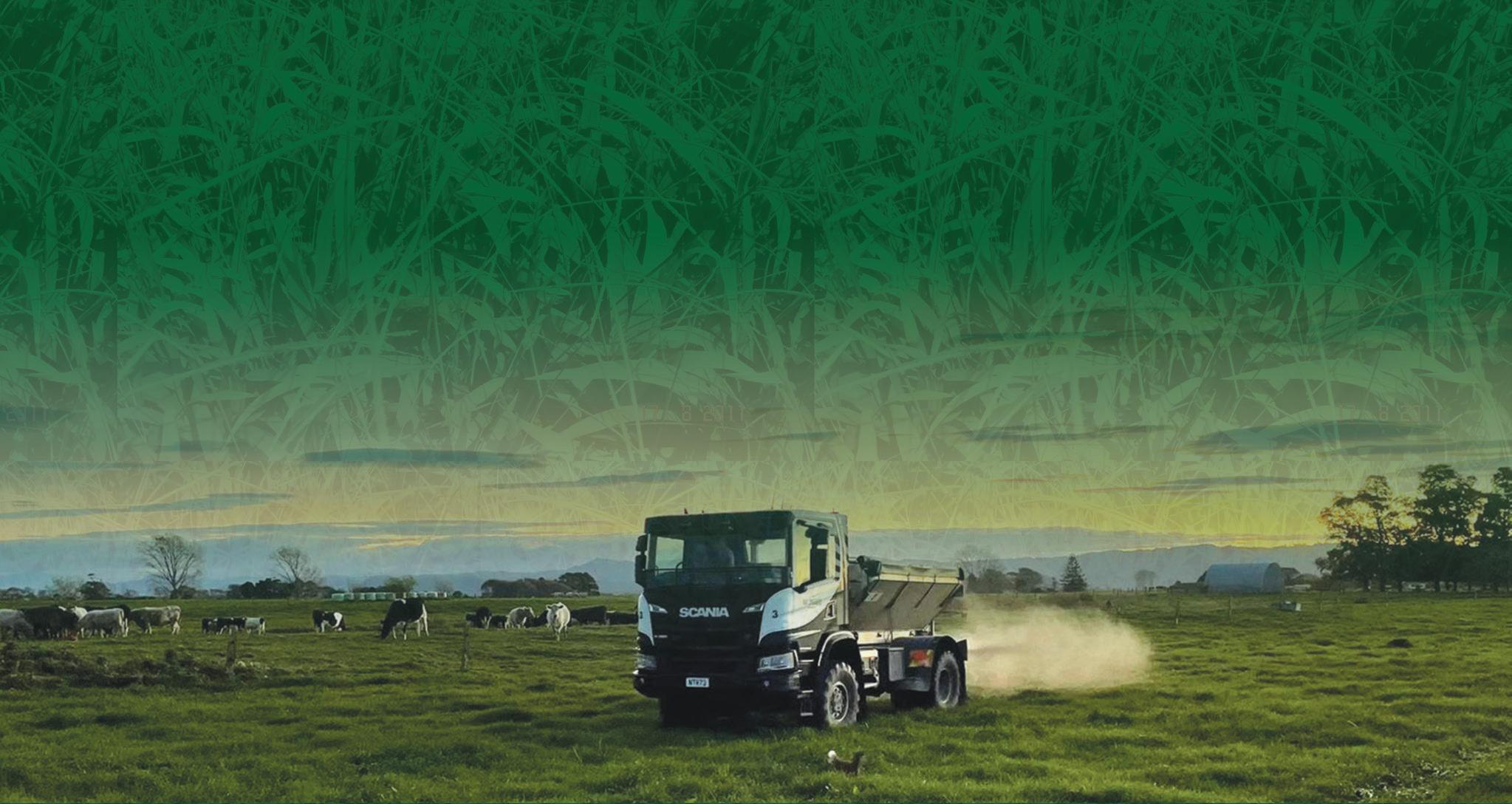






In the fertiliser industry the term “sound science” was frequently used as the reason to stay with mainstream water-soluble nutrient and synthetic nitrogen-based programmes. That begs the question, what is science, and can there be unsound science?
Work by staff at Waikato University has documented a steady decline in soil carbon in intensively farmed pastoral soils in the Waikato while hill country soils have gained.
Science in our view is primarily about measures and challenging accepted thinking and models.
Without regular measures over many years there is no way of knowing whether current nutrient use is delivering best value for farmers and the wider community.
In the late 1980’s funding for farm research was dramatically cut and since then any ‘trial’ work has been industry funded and short term.
There are however sufficient measures available to compare current pasture growth fuelled by regular applications of synthetic nitrogen to production prior.
The work undertaken in the 1970’s and 80’s by the staff at Ruakura Research Station showed total annual production of 18,000kg DM/ha from various Waikato areas without the application of any synthetic nitrogen.
Clover provided virtually all the nitrogen required and the pasture management techniques necessary to maximise its performance were well known.
Eighteen tonne DM/ha/year was a target figure for those of us dairy farming during the 80’s. It was achievable on more fertile country with milder winters, and we knew that when attained a genuine financial surplus was there for the taking.
Figures from various sources show that seldom is the same level of pasture growth achieved today and not in successive seasons.
Synthetic nitrogen, which came on tap in 1989 was supposed to provide a genuine lift in pasture performance. As a development tool it is without peer, however research shows that when used regularly there is a steady decline in the amount of nitrogen fixed by clover.
Nitrogen fixed by clover comes free of charge and clover growth over summer exceeds that of grasses. It is also higher in energy and more digestible which means well fed animals perform better.
Regular synthetic nitrogen applications also result in calcium being lost via leaching and calcium is the key nutrient driving of clover growth. However, there’s possibly a more disturbing consequence of the reliance on synthetic N which is the potential loss of soil carbon. In our view this is the area where more state funded research is required.
Soil carbon is where both nutrient and moisture are stored and even a slight decline can result in a loss of pasture performance.
Over the last thirty years Functional Fertiliser has measured annual pasture performance on client properties using the age-old monthly cage cuts. This allows comparison with historic measures obtained by Research Stations.
Annual growth on a property in the Bay of Plenty has exceeded 20,000kg DM/ha well in excess of that from the local DairyNZ Focus farm applying over 200kgN/ha.
With support from Federated Famers and Scion at Rotorua soil carbon was compared with a neighbouring property reliant on synthetic nitrogen.
The results showed a 30% advantage in growth on the property using Functional Fertiliser products and programmes with a 70% reduction in nitrate nitrogen lost to groundwater.
All data was independently verified. The conclusion was that the Functional Fertiliser programme resulted in more growth at a lower cost and was applicable to all farms regardless of size.

This work has been recognised at Ministerial level however obtaining the funding necessary for further research has yet to be obtained.
The unique aspect of the Functional Fertiliser approach is the delivery of a wide range of selected beneficial fungi and bacteria. These are cultured and added to soft carbon and applied as part of a total nutrient programme.
Work undertaken by DSIR, prior to the formation of MAF, identified, measured, and photographed soil microbes in all the main soil types throughout the country.


They stated that the support of soil life was just as important as the input of nutrient for maximum pasture growth, an essential aspect largely ignored by the fertiliser industry. For farmers wishing to explore the opportunity to explore it doesn’t have to be one or other. The two systems can be seamlessly integrated without the concern of lower production before the significant and sustainable increase.
For more information, please call Peter Burton on 027 495 0041.



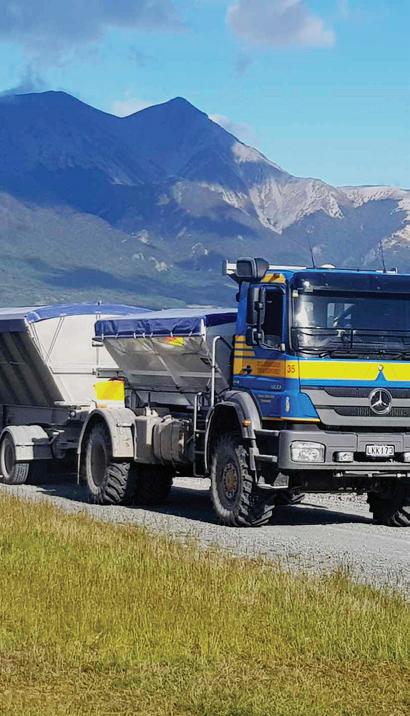






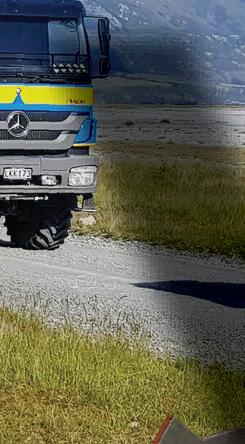










The team at Heliventures are able to provide all manner of agricultural and commercial helicopter services including fertiliser application, as well as product cartage with their bulk transport trucks, aerial spraying, pest control, frost fighting, fire lighting, snow raking and mustering.
Heliventures operates from bases at Oamaru Airport and Pukaki Airport in Twizel. Craig and Nicki McMillan, owner/operators of Heliventures said “they predominantly cover South Canterbury, Otago and the Mackenzie, but at times their work takes them right across New Zealand.”
Heliventures fleet of 7 helicopters include a twin engine AS355NP Squirrel, B3 and B2 Squirrel, three MD 520N Notars, and one smaller Schweizer 300 which is perfect for smaller agricultural jobs and mustering. This capacity enables Heliventures to ensure there is minimal wait time for their services, allowing them to complete the job exactly when the farmer needs it done and optimise fine weather windows.
Heliventures can organise bulk cartage of fertiliser with their own truck or a chosen transport company if required by the farmer. The team can then load this directly from the back of the truck through the grain door, or if preferred Heliventures can load
directly from bulk bins, bags, or urea silos into the helicopter bucket with their specialised loaders. This minimises any wastage of product on the ground and makes for efficient fertiliser application no matter what the ground condition.
Other advantages of aerial fertiliser are that it prevents loss of valuable crops due to damage that can be caused by ground application. There is also no need for the farmer to move irrigation or shut it down prior to application, therefore saving time and hassle.
Difficult areas such as steep terrain can be safely treated and if there are wet conditions, Heliventures can ensure the job is still done on time with no delay.
Heliventures holds Growsafe applicator accreditation and also Gold level Sitewise certification which can be invaluable in farm audits saving time on contractor approval by simply being able to tick this box. The farmer can be assured they are working with a service provider that has met the highest standards in quality and safety standards.

the Tabula mapping system. This is very beneficial and ensures easy management of application history for the farmer.
Heliventures can apply fertiliser or agrichemicals at any prescribed rate using their purpose-built fertiliser buckets and spray systems. This makes spreading of urea, super, seed and various other solid or liquid products accurate and efficient. Accuracy is something that Heliventures prides
Heliventures can apply fertiliser or agrichemicals at any prescribed rate using their purpose-built fertiliser buckets and spray systems, making the spreading of urea, super, seed and various other solid or liquid products accurate and efficient.
itself in and this is aided by a modern GPS guidance system which ensures product is applied with excellent coverage every time. Heliventures are your local efficient and competitive helicopter company and can cater to all of your farming and fertiliser needs.
Give Heliventures a call today to find organise your upcoming aerial application needs, or to find out more about what they can offer you for the upcoming season.






As one season passes into the next, it’s a good time to reflect on the future of agriculture, both its production and profitability.
] by Donald L Hart
Growing food is becoming increasingly risky and, at times, financially unsustainable. Weather extremes, tariffs, climate change, and environmental pressures all take their toll on the bottom line.
At the same time, consumer expectations are shifting. People want food that’s sustainably produced and rich in nutritional value. Producers, understandably, want systems that are economically viable. The challenge, and opportunity, is to bridge the gap between what consumers want and how we produce food.
One area gaining attention is pastureraised meat and milk. Many assume all meat is nutritionally the same, whether grain-fed, mono-pasture or multi-pasture raised.
In reality, production systems can differ by as much as 50% to 60% in the presence of key nutritional compounds.
This is why I’ve long promoted the idea of “Food as Medicine”, a concept that of-
fers both a health benefit to consumers and a market advantage to farmers.
At Top Soils, we’re committed to helping farmers adapt and thrive. We focus on delivering high-quality service, advice, and products. Our team brings expertise and dedication, backed by ongoing research into soil biology, plant nutrition, and bio-stimulants. Our goal is to ensure the best return on investment (ROI) and support long-term sustainability in your farming system.
We’re often asked about regenerative agriculture. The term means different things to different people, but for pasture-based systems, our definition includes diverse species of grasses, legumes, and herbs; balanced soil nutrients; and a focus on biological health using non-synthetic, non-soluble inputs.
In contrast, degenerative practices are those that degrade soil health and longterm productivity, often unintentionally. Fortunately, many producers are already ap-


plying regenerative principles and may only need small adjustments to qualify.
A recent article put it well: “Conventional Fear Meets Regenerative Wisdom.” Change can be uncomfortable, but how we respond to it will define our success. As we head in-
to the 2025 growing season, one thing is certain: change is coming. Preparing for it is the best investment we can make.
We thank you for your continued trust in Top Soils. We’ll keep working hard to stay ahead of the curve, so you can too.








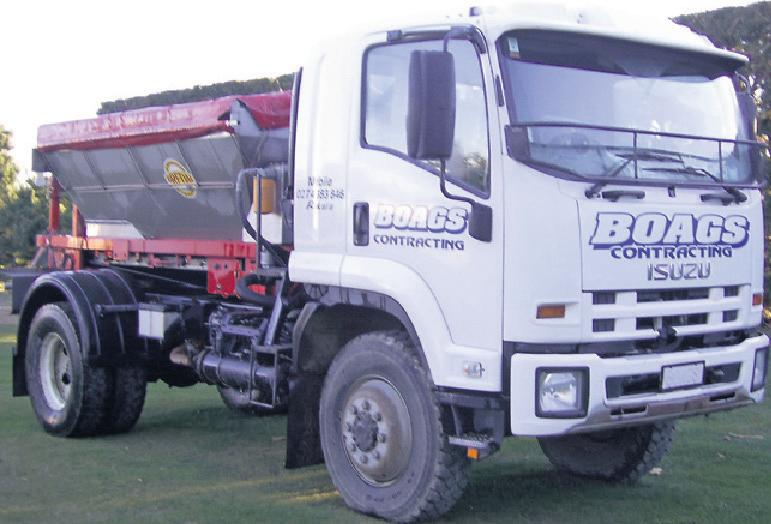





Groundbreaking New Zealand field trials by leading soil scientist Dr Gordon Rajendram indicate that foliar fertiliser boosts spring pasture growth in Canterbury.
] by MediaPA staff
Dr Gordon Rajendram, says foliar fertilers hold the key to farmers overcoming Canterbury’s cool late winter/early spring major challenges for pasture growth.
Dr Rajendram, who is based in Hamilton, says results from his research field trials have revealed foliar fertiliser provides the necessary boost to pasture growth especially when soil temperatures are low and nitrogen uptake through the roots slow to a crawl.
Foliar fertilisation involves spraying water-soluble nutrients directly onto plant leaves. It’s like a targeted nutritional topup, allowing plants to absorb nutrients almost immediately through their foliage via stomata, cuticle and leaf hairs.
“This method is proving effective in cold climates like the Canterbury region incurs,” says Dr Rajendram.
“Foliar sprays deliver nutrients exactly when and where they’re needed,” he says. “You’re feeding the plant directly, so it bypasses the limitations of cold soil conditions and kickstarts growth quickly.”
AgResearch backs the science Dr Rajendram isn’t the only one seeing these results. AgResearch, one of New Zea-
land’s leading agricultural science organisations, has conducted similar trials with consistent outcomes.
In fact, foliar fertiliser has demonstrated efficiency rates of up to four times higher than granular applications.
One replicated pasture trial in New Zealand revealed that just 9 kg N/ha as foliar urea achieved the same grass yield (1,426 kg DM/ha) as 37 kg N/ha of granular urea. The response is rapid for a 24 day period.
That’s a powerful statistic, it means foliar N delivered about 61 kg of dry matter per kg of N, compared to just 14 kg/kg N for granular urea.
“With a quicker plant response and fewer applications needed, this method saves time and product, offering real cost-efficiency to Canterbury farmers,” Dr Raendram says.
“Granular urea is only about 35% efficient, while foliar applications are faster and use less product overall. That’s a win for farmers and the environment.”
With Canterbury’s sensitivity to nitrate leaching and water quality issues, foliar fertilisers offer an environmentally responsible choice. Because nutrients are absorbed di-




rectly by leaves rather than moving through the soil (volatilastion) there is less chance of leaching into waterways. The reduced volume of fertiliser required further supports sustainable practices.
Dr Rajendram advises farmers to use fo-
liar sprays as a complement to their existing soil fertilisation strategies.
For best results, he recommends applying in the early morning or when there is dew on the leaves, and avoiding hot, dry days to prevent leaf burn.







Farmers have been at the mercy of the weather for as long as we’ve been farming. Of course, as time has progressed, we’ve learned to manage unpredictable weather, diversify our offering and supplement what mother nature won’t provide, but this still pales in comparison to working in favourable conditions.
] by Alli Arden
Agronomist at Navigate Eco Solutions
Increasingly, we must look to technology to help us understand our land, make farming more efficient, and increase the productivity and profitability of our businesses.
Arable farmers have been well served for decades when it comes to software and technology. For example, sensing equipment fitted to tractors can measure a wide range of crop parameters such as biomass, grain yield and quality, and can pinpoint the precise locations of individual plants. The livestock sector, on the other hand, has been traditionally under-resourced in terms of simple digital solutions.
Thanks to stringent environmental regulations and other market disruptions and inflation, meat and dairy farmers are at constant risk, and must close the efficiency gap.
When farming livestock, soil is so much more than just the ground they walk on. It’s a balanced, living eco-system that provides the forage they eat, and its quality can have a significant impact on their wellbeing and productivity. The functioning of the soil can also influence air quality which can be linked back to how nutrients are supplied and used within the farming system.
Pressure is mounting on agriculture, particularly on intensive livestock farms, to reduce carbon emissions. In England the NFU has set a target for farming to become net zero by 2040, 10 years ahead of the government’s target.

Understanding the soils nutrient composition can help farmers transition towards lowcarbon farming and can deliver a massive cost-saving benefit for farmers who are excessively applying fertilisers they don’t need.
For example, nitrogen is an essential element for yield and protein production making it essential for healthy crop growth and a well-fed herd.
Over winter, rainfall reduces the amount of nitrogen left in the soil ahead of the following spring and how much remains needs to be considered when considering how much nitrogen-rich fertiliser needs to be applied to restore the supply balance.

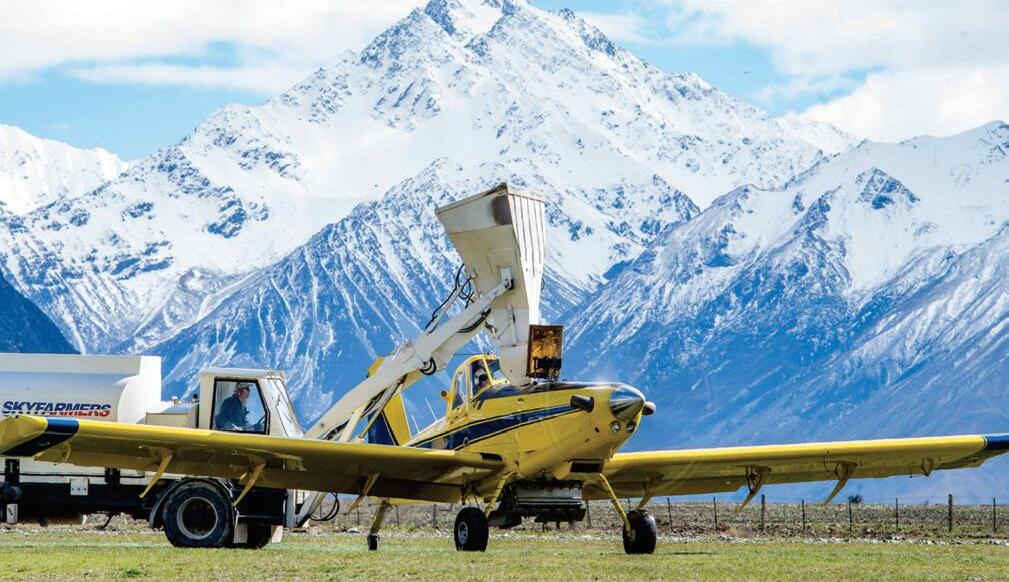


Embracing technology: understanding the soils nutrient composition can help farmers transition towards low-carbon farming and can deliver a massive cost-saving benefit for farmers who are excessively applying fertilisers they don’t need.
In 2023-24, Navigate Eco Solutions worked with a Gloucestershire farmer with a 300+ cow dairy herd and a 500-strong beef herd. After assessing the nutrient content of the soil and through the better management of applied slurry and manure to his silage fields, he was able to reduce his fertiliser usage by 55%.
Livestock farmers and their advisors can use nutrient management tools to help them better plan their nutrient supplies from both the soil, fertilisers and applied slurries or manures.
Better planning not only identifies how farms can get the best out of their land but
also reduces the risk of excess nutrients in the environment and protects business profitability.
Some modern tools even digitally connect to the Agriculture and Horticulture Development Board’s (AHDB) Nutrient Management Guide (RB209), ensuring that crop recommendations are always based on the latest guidance.
Agriculture faces a number of challenges in how we produce food sustainably and needs to embrace all the technological support available; and that extends to livestock farms, as well as our more technologically versed arable peers.

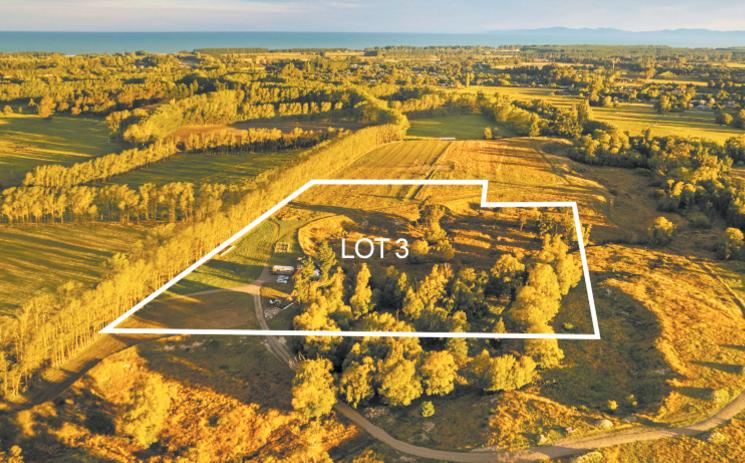








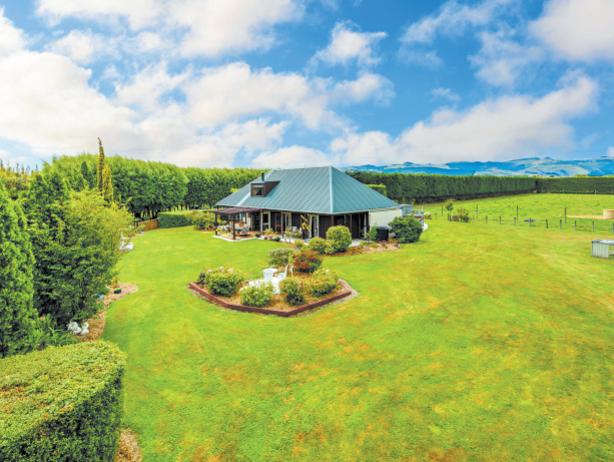














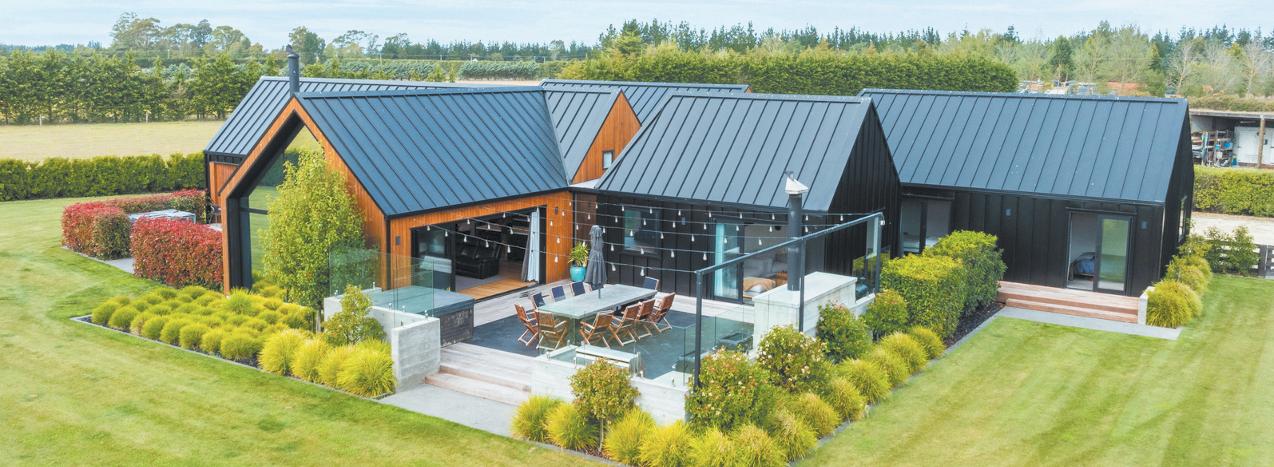






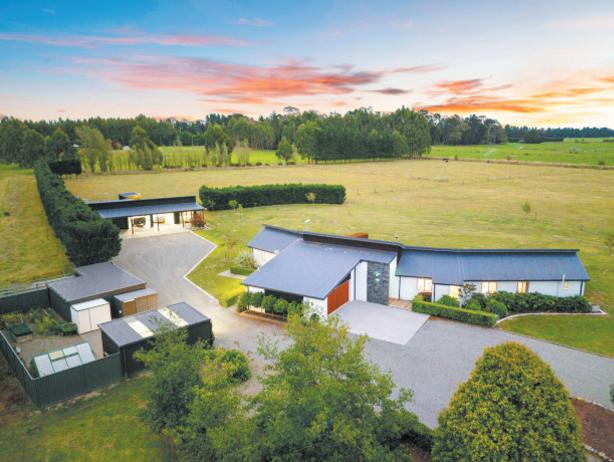

















Optimising spray applications will save money on chemicals and do a better job, according to a leading New Zealand sprayer tester and operator.
] by Kent Caddick
And from what he’s seen, there’s widespread room for improvement in contract and farmeroperator practice.
“The sprayer is the most important piece of equipment on an arable farm today,” Jeremy Talbot of Talbot Agriculture said.
“The biggest issue is the choice of nozzle. With the same water rate different nozzles do very different things.”
Talbot says air-induction nozzles are used far too widely and many operators would do better to use standard flat fan nozzles, or preferably a twin-cap with two flat-fan orifices.
“You get an eight-fold increase in the number of drops and four times the deposition on the crop or target weeds, and for most chemicals that’s where they need to be. If they hit the soil they’re wasted.”
Another problem, particularly where contractors are concerned, is using too little water. Fewer fill-ups means a considerable increase in area that can be covered in a day, hence why contractors are keen to reduce volumes, Talbot says.
“But it comes back to coverage. If you’re using less water there are fewer drops per hectare and you’ll get less chemical onto the target.”
In Europe, some countries have introduced legislation specifying a minimum of 150 litres/ha of water be used as it’s now accepted low water volumes have hastened the onset of herbicide resistance in certain weed populations.
“Only two countries are still using air induction nozzles and very low water rates widely, and that’s Australia and UK.”
Australia’s and the UK’s herbicide resistant grassweed problems are well documented and Talbot says it’s only thanks to the diverse rotations on most New Zealand arable farms that similar issues haven’t arisen here yet.
Driving too fast increases drift, which is another reason why some contractors favour low drift nozzles, says Talbot.
He advocates a maximum of 12kmh, or down to 10kmh if there is drift, slowing to 8-9kmh to turn on headlands.
“Spraying should be a smooth, non-stressful job.”
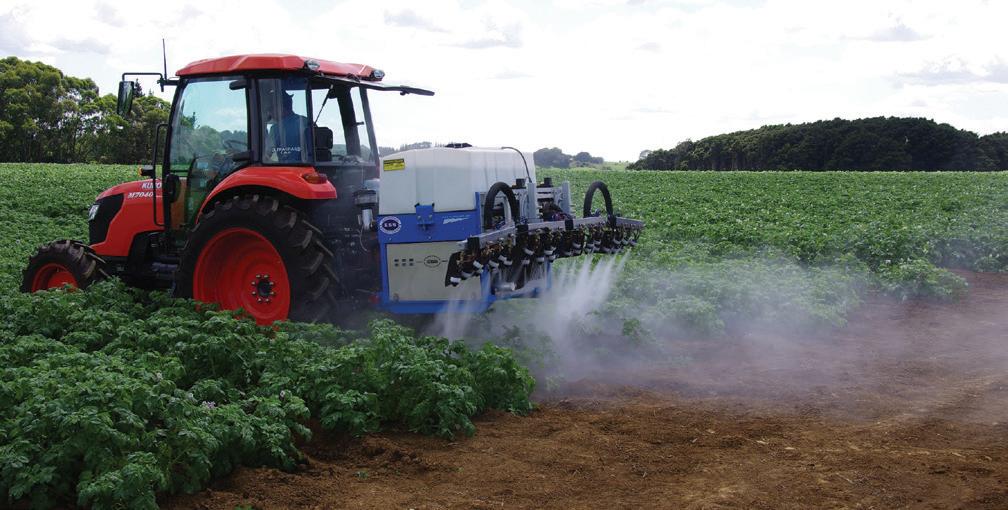
Spray tips
• Don’t speed: increases drift, boom bounce, yaw, and in/out problems.
• Beware low-drift nozzles: efficacy compromised.
• Keep water volume up: 150 litres/ha minimum.
• Twin-cap nozzles help hit both sides of target.
• Remove PPE before entering cab.
• Right nozzle, speed and volume = less chemical cost.



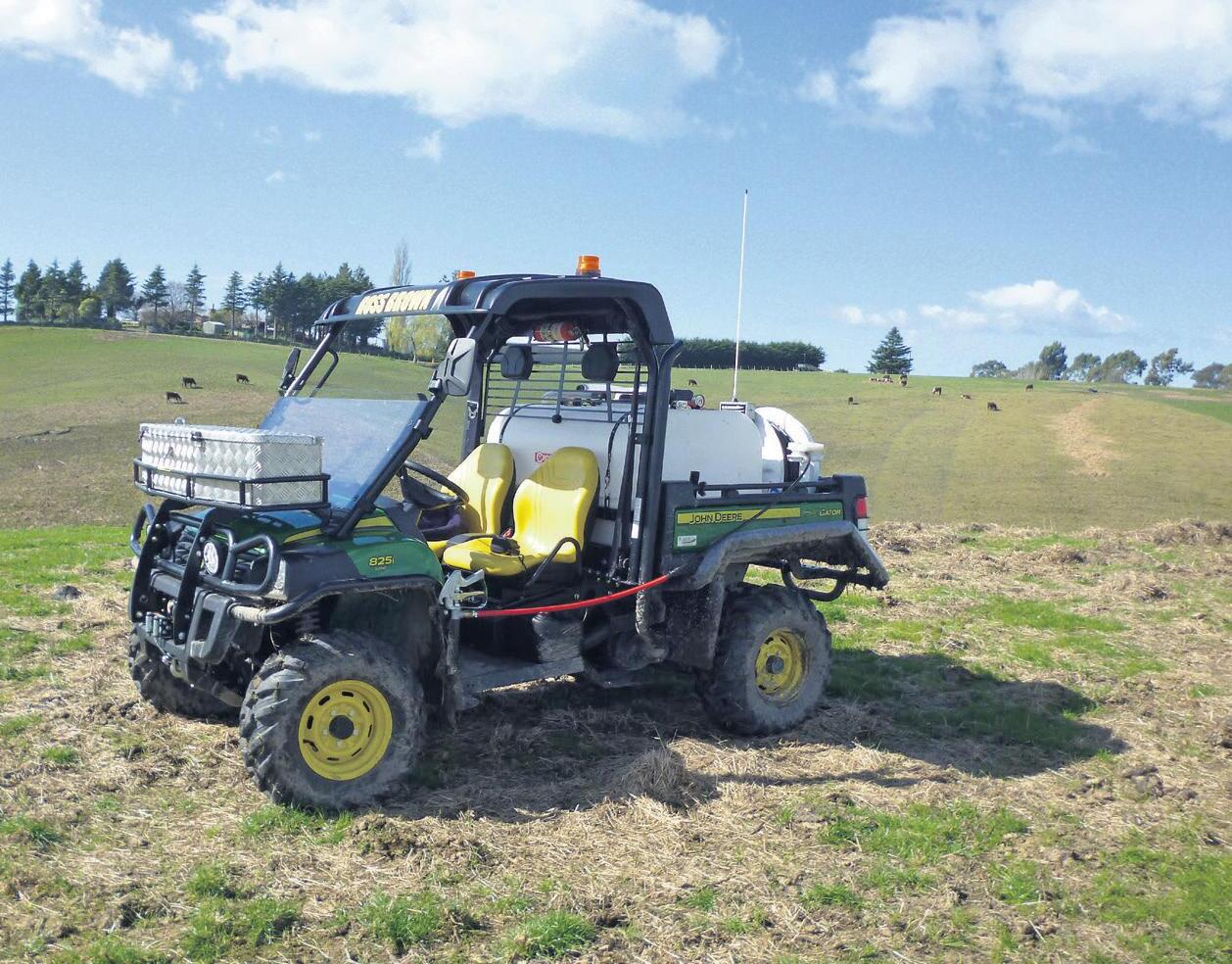








Nowadays, the saying “good fences make good neighbours”, doesn’t just mean stopping your stock getting into someone else’s winter feed. It’s bigger than that.
] Advertorial supplied by ] UPL NZ Ltd
Spray programmes demand responsibility for reasons of safety for humans and crops as well as protecting the environment, and spray drift, with its unintended consequences, can be serious.
There’s also a more self-serving reason why it’s important to ensure spray goes where it’s intended, ROI.
Ash Pace, UPL NZ Ltd. Regional Manager Central South Island, says deposition (getting spray on target) gets the most out of spray programmes. His recommendation is Li-1000.
Li-1000 is a multipurpose adjuvant: a surfactant, penetrant, and drift retardant, all in one. Ash says the non-ionic, low foam, surfactant enhances the activity and penetration of herbicides and other crop protection products.
“Li-1000 is the perfect partner, particularly for spray-out, knockdown herbicides such as glyphosate.”
Ash says Li-1000 is widely used by ground and aerial sprayers and has staunch advocates from both.
Someone who knows the aerial spray industry well is Helicopters South Canter-
bury CEO and pilot Richard Geary. The successful company was founded back in the 1990s and Richard, who has 20 years under his belt, heads an experienced team, with an impressive fleet of helicopters.
Based near Timaru, the company operates primarily in South Canterbury, Mid Canterbury, and the Mackenzie Country, though Richard doesn’t rule out going further afield, if there’s the demand.
Helicopters South Canterbury caters for a broad range of clients, but agriculture is their bread and butter. Precision and high standards are critical.
Richard says every variable is always factored in, from the safety of staff to delivering an effective and efficient service to the farmers who rely on the company for spraying gorse, broom, and brushweed, and applying other crop protection products.
Spraying out old pastures is a staple for the busy company. When using Roundup, Richard says they use drift-controller and penetrant Li-1000 95% of the time.
“There are often sensitive crops nearby, like fodder beet or emerging grass, and Li1000 gives us that extra bit of certainty and security.”
Richard and his team discuss jobs with clients before they commence and make




notes not only on what is required, but also on any adjacent crops. Their focus: delivering jobs better.
“LI-1000 trumps everything else as a drift retardant and works well as a penetrant.”
He says that factors including rotor wash ((the downward movement of air caused by the action of the helicopter’s blades) mean helicopter spraying, while often the most practical and cost-effective solution, is heavily reliant on effective drift control products to get spray exactly where it’s meant to be. “Li-1000 is great product.”
Ash explains that, due to its unique properties and multiple modes of action, Li-1000 produces a more uniform spray pattern for reduced drift, increases droplet spreading and retention, and increases leaf penetration through the cuticle and translocation throughout the plant.
Richard geary from Helicopters south Canterbury uses Li-1000 in their spray programmes for effective drift control. Multi-purpose adjuvant LI-1000® keeps spray where it’s meant to be.
Glyphosate and other crop protection products are taken into the plant faster, which in turn improves uptake and translocation for better performance.
Helicopters South Canterbury also uses other UPL adjuvants including All Clear® 2X tank cleaner, and Du-Wett®, which delivers better spray coverage, and Slikka®, a super-penetrant used on gorse and brushweeds.
Richard says it’s reassuring to know that there is solid research and testing behind UPL’s products.
“I can use their products with confidence knowing how much work has gone into them.”
For more advice on enhancing drift control with Li-1000 talk to your technical advisor or contact Ash Pace, uPL NZ Regional Manager Central south Island, at 021 987 735.
Yes, there are other adjuvants. But not with our track record.
We’ll work harder in every paddock, vineyard and orchard block.
UPL adjuvants have stood the test of time, trials, and most importantly, distributor, grower and farmer scrutiny. From water conditioning right through to tank cleaning along with the spreaders, stickers, penetrants, and drift agents UPL is known for. Still not sure? Ask one of our UPL Regional Managers.

















by John Cooney

Next time you ’re in London, once you’ve eyeballed Big Ben, Trafalgar Square and Buckingham Palace, you’ve gotta get out in the country. Why? Because there’s more to Ye Olde England than just London … I mean, not far along the M4 are some of the sweetest, loveliest corners you can find in this “green and pleasant land”. And when you wander off the
beaten track (as we’re gonna do in June/July 2026) you’re soon oohing-and-aahing at fairytale villages, leafy woodland lanes, thatchroofed cottages, flowersmothered gardens, pubs with weird names, cathedrals with pointy roofs, medieval castles and knights in shining armour.
We’ll fall in love with the honey -coloured village of Woodstock … explore stunning Blenheim Palace

feel the ‘Downton Abbey’ vibes in old Bampton town … go walkabout in exotic Hidcote Manor get all floral at Kiftsgate Court discover magical Broadway … and relive Roman times in historic Bath
We’ll meander through idyllic hamlets – like St Ives, Port Isaac, Bourton-on-theWater , and (grisly-sounding) Lower Slaughter . We’ll soak up the seaside magic of Padstow. And we’ll


roam around more bloomin’ gardens than you can shake a gumboot at: Trebah, Heligan, Sissinghurst and Great Dixter (to name just a few).
We’ll finish with a Midlife Madness flourish, crossing the Channel for a spectacular live outdoor concert in ANDRÉ RIEU’s hometown of Maastricht, Holland!
Be quick! This tour’s almost full! Call us on 0800 323 333 or visit www.midlifemadness.tours





Environmental sustainability, science and welfare advancements, and an innovative programme to promote careers in the veterinary sector were among achievements celebrated at the recent New Zealand Veterinary Association Te Pae Kirehe (NZVA) awards for 2025.
]Article supplied by NZVA Presentations to dedicated professionals from across the industry were made by Minister Andrew Hoggard and outgoing NZVA President Kate Hill at the awards celebration event in Wellington last month.
NZVA President Rob Mills said the annual awards recognise the many significant accomplishments, exemplary leadership and tireless commitment in the veterinary community countrywide.
The event included the Community Engagement Award, a new category for 2025, which recognises individuals or organisations that have made outstanding contributions to community outreach and education related to animal health and welfare.
The winner was Story Vets (Anexa Veterinary Services). Launched in 2024, Story Vets is an educational kit for year 4 to 8 school students designed to help attract young people into the veterinary profession.
This year the NZVA Awards Committee announced two winners in the Veterinary Impact Award category, for individuals who have made a considerable positive impact for the veterinary profession.
Ginny Dodunski received the Alan Baldry Award for her service to the Sheep and Beef Cattle Veterinarians Branch of the NZVA. Dodunski spent 23 years as a production animal veterinarian and now works as the Wormwise Production Manager.
Neil Chesterton, who has had a long career in the dairy industry, including a focus on cow lameness and behaviour, received the Golden Glove Award from the Dairy Cattle Veterinarians (DCV) Branch of the NZVA.

The Veterinary Business Excellence Award was presented to Vet Services Hawke’s Bay (VSHB).
The award recognises business excellence that supports employee wellbeing, workplace innovation, entrepreneurial flair, professional leadership and collaboration, and/or customer service in a way that reflects positively on the veterinary profession.
Winner of the Environmental Sustainability Award was Lewis Griffiths (VetSalus). The award is presented to individuals, veterinary businesses or groups within New Zealand to recognise leadership and/or collaboration to improve environmental sustainability.
The Outstanding Service Award, which recognises long and valued service to the NZVA, was awarded to Stephen Hopkinson, who has held numerous roles, including DCV Committee Member, DCV President, NZVA Board Member, and the inaugural Member Advisory Group Chair.
The President’s Award, which recognises meritorious service to the veterinary profession in the broadest sense, was given to Mark Bryan who has had an extensive career dedicated to advancing veterinary science and animal welfare.
Jordi Hoult was named winner of the Young Veterinarian Award which honours individuals who have shown outstanding veterinary, communication and leadership skills since graduating as a veterinarian.



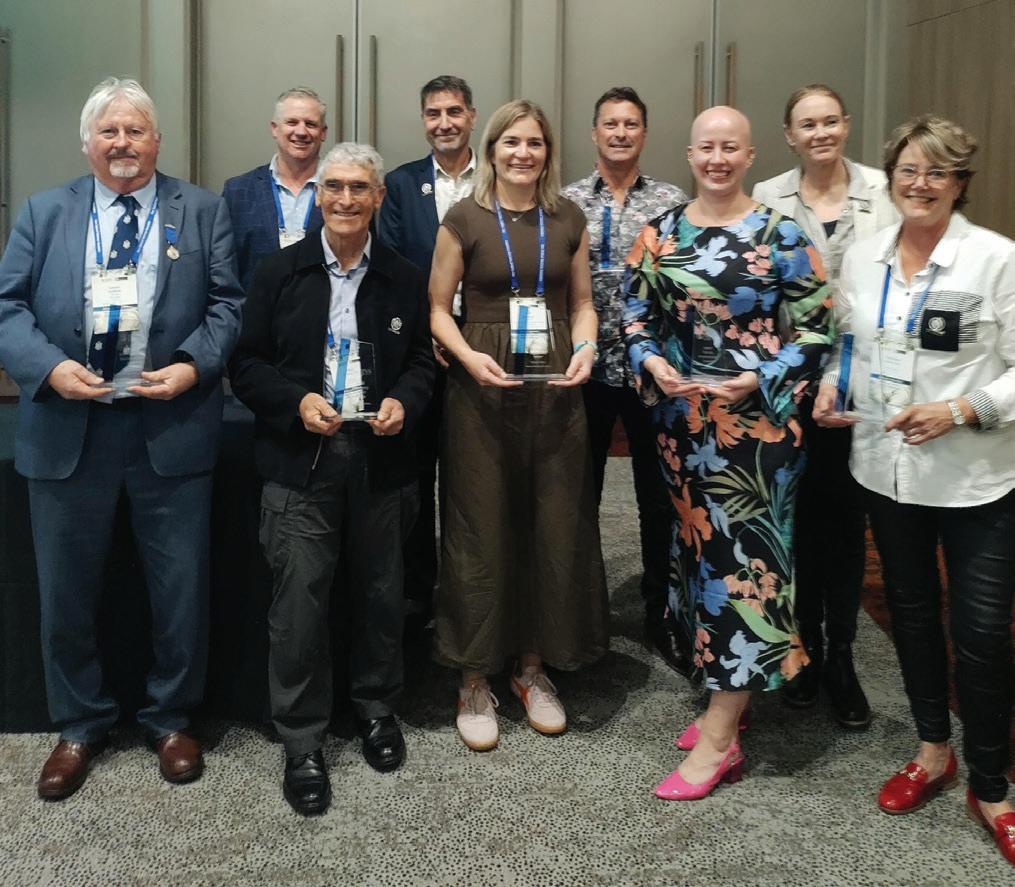









Supplied by David Reid Homes Canterbury
Whether you’re running a working farm or planning to build on your own piece of rural land, your property deserves a home that fits its surroundings. Every David Reid Home is designed for Canterbury conditions, purpose-built to suit your site, support your daily life, and make the most of your location.
From Darfield to Tai Tapu, Lincoln to Castle Hill, we’ve built homes that balance practicality with beauty, always tailored to the people who live in them.
At David Reid Homes Canterbury, we manage the full build process. From planning and design to consents and utilities. We take care of the details so you can focus on living, working, or retiring on the land you love.
Why Build New on Your Rural Property?
Tailored to Your Land and Lifestyle Build where the sun hits best, with natural shelter and matching views. Whether you need room for equipment or want privacy and space to breathe, we shape the design to fit your land and lifestyle.
Practicality Meets Comfort Rural life brings muddy boots, visiting
family, and long days outdoors. With thoughtful touches like dedicated mudrooms, generous storage, and kitchens that cater for a crowd, your home will be as functional as it is welcoming.
Multi-Generational Ready
Rural homes often serve more than one generation. If you’re planning for adult children, ageing parents, or future flexibility, we’ll help you create a layout that works now and adapts as your family’s needs evolve.
Why Build with David Reid Homes Canterbury?
Architecturally Designed for Your Site
Every home is either custom-designed or adapted from a proven plan to suit your block, your views, and the way you want to live. Built to last and to feel like home from day one.
Designed for Canterbury Conditions Our homes are carefully made for the realities of rural living, from high insulation values for extreme temperatures to practical, well-planned spaces for tools, equipment, and hobbies.
We Handle the Details Rural builds come with challenges like power, water, septic systems, and council consents. Our experienced team knows every step and will guide you through the entire process from start to finish.

Above: A modern David Reid Homes Canterbury built
Efficient and Future Ready
All our homes meet or exceed New Zealand’s 7-star energy efficiency standards. With smart orientation, quality insulation, efficient glazing, and lowenergy heating and cooling, your home stays comfortable year-round. It’s a practical investment that reduces energy use, lowers running costs, and supports a more sustainable way of living.


Your Land. Your Legacy. Whether you’re building a family farmhouse, a retirement home, or the rural lifestyle you’ve always envisioned, we’ll help you create a home built to stand the test of time.
Ready to discuss your building project? Get in touch with Carl today on 021 0272 8839 or visit the website: davidreidhomes.co.nz
As experienced design and build specialists, we combine the latest building technologies with our award-winning expertise to create a home that reflects who you are and how you live, tailored to the conditions of rural Canterbury. The complete experience.




Following years of strong growth and success supporting tradespeople across New Zealand, CBS Co-operative is proud to announce its official expansion into the rural sector.
] Article supplied by CBS Co-operative Founded with the mission of empowering its members through collective buying power, CBS has delivered unmatched value to over 1800 members in the building and construction industries.
That same successful model is now being extended to support New Zealand’s farmers, growers, and rural contractors.
“After listening to the needs of our members and seeing the similarities in buying patterns between trades and rural businesses, we knew it was time to launch into the rural sector,” CEO of CBS Co-operative Carl Taylor said.
“The co-op model works because it’s built on transparency, unity, and giving back. That’s something rural New Zealand can absolutely benefit from.”
CBS members gain access to exclusive upfront discounts from more than 30 of New Zealand’s leading merchants including suppliers of fencing, tools, fuel, machinery, safety gear, and more.
Profits are returned to members through annual rebates, ensuring the benefits stay where they belong with those who do the hard work.
“With no external shareholders and a true commitment to supporting its community of members, CBS is positioning itself as a compelling alternative to traditional rural supply chains,” Taylor said.
Members not only benefit from cost savings but also gain an ownership stake in the co-operative, granting them a voice in its operations and a share in its profits.

Revolutionising rural: CBs Co-operative CEO Carl taylor says CBs is positioning itself as a compelling alternative to traditional rural supply chains.


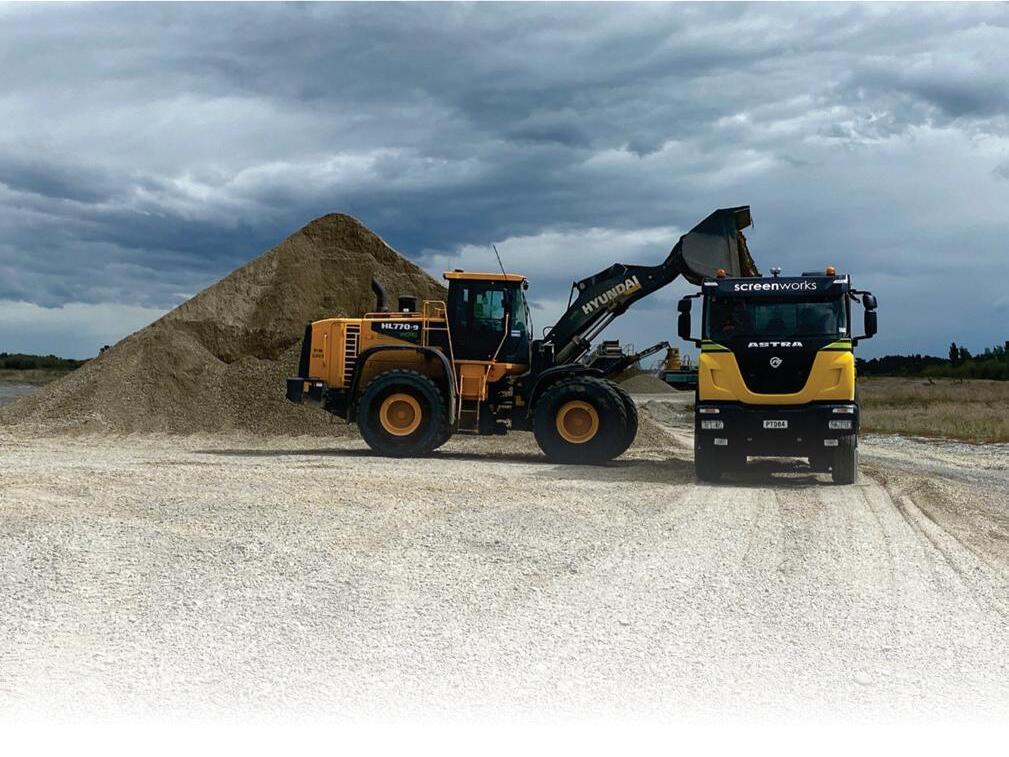
Other benefits include:
• Discounts: Members receive top-tier pricing on a wide array of building supplies.
• Networking: The co-operative hosts free member meet-ups, fostering networking opportunities within the industry.
• Advocacy: Due to its extensive network
and industry presence, CBS Co-operative is the preferred source for media outlets covering construction news
Farmers, growers, and rural professionals are encouraged to visit www.cbscoop.co.nz to learn about membership benefits and how CBS can support their operations.

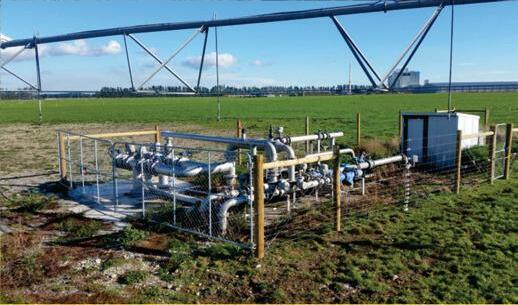











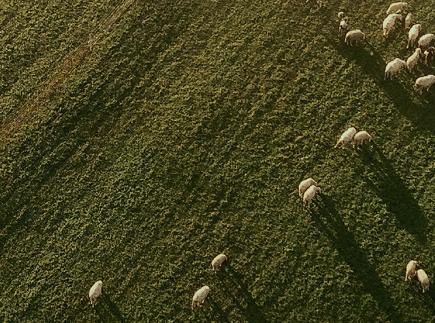
































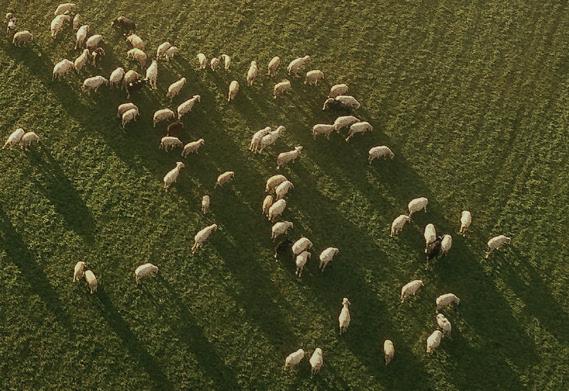












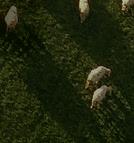








































































































Beef + Lamb New Zealand and Forest and Bird have welcomed a report released by the Parliamentary Commissioner for the Environment (PCE) Simon Upton which examines the drivers of forestry in New Zealand.
B+LNZ says the report shows current policies, particularly settings under the Emissions Trading Scheme (ETS), are driving a wave of land-use change to carbon forestry with significant environmental, economic and social risks.
B+LNZ Chair Kate Acland said B+LNZ has been hugely concerned about wholesale land-use change for a long time and advocating for action from successive governments.
“The PCE has called this out for what it is, not simply a sheep and beef issue, but a fundamental issue that New Zealand as a country needs to address,” Acland said.
“That said, the impact on our farmers is huge and disproportionate. The total amount of sheep and beef farmland purchased for conversion to forestry between 2017 and 30 June 2024 was more than 260,000 hectares.
“For every 100,000 hectares planted, close to one million stock units are lost. Those lost stock units equate to lost export earnings, but also to significant negative impacts on rural businesses and communities and our iconic farming landscapes.”
Acland said while the Government has introduced some limits around entering certain land classes into the ETS, they still have concerns about the implementation of these limits.
Meanwhile, Forest & Bird says the report backs up the need to urgently increase planting and regeneration of native forests as permanent carbon sinks and for native biodiversity.
“We strongly agree with the PCE’s assessment that a ‘reset’ is needed and native
‘
Concerned: B+LNZ Chair
Kate Acland has welcomed the government’s introduction of some limits around entering certain land classes into the Ets, she says B+LNZ still has concerns about the implementation of the limits.
trees are given greater forestry priority across Aotearoa,” Regional Conservation Manager for Forest & Bird Dean Baigent-Mercer said.
“The report rightly questions the commercial concept of using pines as ‘permanent carbon sinks’. Solutions need to be long lasting and address the entwined climate and native biodiversity crises at the same time.”
Baigent-Mercer said flammable, shortlived, and shallow-rooted pines just don’t cut it as a permanent carbon sink.


With 25 years experience in the industry, the Forest Management Team offer services in:

• Woodlot and shelterbelt harvesting
• Timber sales to domestic and export markets
• Forest establishment of harvested and greenfield sites
• Forest valuation
• Emission Trading Scheme advice and management
• Trainer/Assessor in NZQA forestry related units
Our highly experienced teams aim to ensure value optimisation in all aspects of forest management.

“The PCE’s report underscores the need to reform the NZ ETS to manage risks from carbon forestry and to target areas that need it most, establishing permanent native forests on erodible lands,”.
“While the report notes the current economic dominance of radiata pine, we believe that with appropriate policy signals and financial mechanisms, native afforestation can and should play a much more significant role.”



For every 100,000 hectares planted, close to one million stock units are lost, negatively impacting rural businesses and communities.
Kate Acland B+LNZ Chair
















The commercial forestry sector remains in good heart with very good domestic sawmill demand and export sales to China and India chugging along. Prices have remained flat to very slightly up in export logs which is positive for this time of year.
] with Allan Laurie MNZIF
] Laurie Forestry Ltd
In Canterbury at least, we have high enquiry levels from local sawmills looking for more log, and also wanting some different grades and price levels in the mix.
It is excellent to be taking enquiry around pruned log, confirming strong demand in the appearance grade lumber sector. My spies tell me things are quieter in other regions.
China is softening in terms of daily usage, now hovering close to 50,000 cubic metres compared to 60,000 last month. This drop is entirely expected as the summer heatwaves ensure lower productivity and shorter days worked. Inventory has started to increase again, currently sitting at around 4.1m cubic meters, which is not particularly healthy.
For readers who follow my report and review others, I am sometimes asked why, for example, I report inventory at 4.1mill m3 and others will be reporting a much lesser number.
The difference is my numbers reflect all softwood logs across all ports. Others sometimes only report Radiata pine and some also exclude minor ports without explanation.
Prices in the wholesale sector in China are weakening, confirming demand across the eastern seaboard is also weak. Movements have been slight thus far, but sufficient to ensure it is unlikely we will see the price of NZ logs landed in China increase in the near term.
Most commentary suggests it with be mid/late Q3 (September) before autumn sales will pick up with any positive movements in prices likely to remain on hold until then.
At the same time, the delivery rate of New
Zealand logs to China has also declined, with winter, including heavy rain events impacting productivity. Current log prices are at annualised lower levels also ensuring harvest of forests at some distance from ports remains subdued.
The antics of the illustrious Donald Trump continue to impact trade which again is likely to negatively impact demand and therefore pricing. It is great to see, despite the stupidities, wood fibre markets internationally are actually quite stable.
It is also good to see an increasing number of Americans are realising their election foley which we can only hope leads to Donald’s reins continuing to be pulled in.
For the moment CFR prices (cost of log landed in US$ per m3) for New Zealand Logs in China are stable to rising slightly. Latest commentary suggests a general movement from US$110 to $113/114 per cubic metre A grade basis, with the quality of cargo and percentages of long lengths impacting final negotiations. It is looking like there will be 37-40 shipments from New Zealand in July which is five to six less than normal.
India is continuing to emerge from a market low point with small price increases being the order of the day. There has also been a crazy seller in this market buying high in NZ, selling low in India. The market generally considers their days to be numbered and none too soon for the rest of us.
Prices in India for the same A grade basis logs sits around the low to mid $120’s per m3, but sea freight rates are also much higher. Bottom line is, both markets are yielding very similar net returns to NZ forest growers at the wharf gate.
Shipping remains in an uncertain space with the recent red sea sinking of a bulk ves-

sel by the Iran backed Houthis rebels making everyone nervous, particularly for ships heading to India.
The Houthis say that any Israel-linked ship is a target including US and UK warships, but they have also attacked the ships of many nations with no connection to Israel.
For the moment shipping costs are stable
but availability for some destinations could become an issue.
As always, please remember the thoroughly important message, “despite the challenges, it remains, as always, fundamentally important, the only way forward for climate, country and the planet, is to get out there and plant more trees”.







Chris Wills, a dairy farmer from Milton, began using probiotics in spring 2023 to address somatic cell count (SCC) grades when cows transitioned from their winter barn to lush spring pasture. While the SCC issue was resolved, an unexpected benefit emerged – cows began cycling significantly faster.
In the second season on the program, Halter data showed cows were returning to heat just 24 days after calving, far below the national average of 42 days.
“The first season I used Rumicell just to the milking herd, cycling pre-mating was phenomenal,” says Chris. “There was no need for Metrichecking or CIDRs, and our 3-week submission rate rose to 93% – a 5% increase.”
Chris had tried various products to fix his SCC issues, including a live yeast, but switched to Probiotic Revolution’s Rumicell after reading about another farmer, John McCarty, who went antibiotic-free using probiotics. Rumicell combines live yeast with carefully selected bacterial strains to support digestion and immunity.
Chris began with autumn calvers and carryovers in May 2023. With 480 cows, most calving in spring, the cost of switching from a live yeast product was negligible, and the usual spring SCC spike was greatly reduced, avoiding any grades.
Probiotic Revolution’s Chris Collier points to research showing that feeding cows 3 strains of probiotics 21 days pre calving as well as post-calving helped improved production as well reducing subclinical ketosis which is strongly linked to several early lactation issues such as mastitis, calving difficulties, milk fever and post calving cycling.


Consequently in 2024, when Chris added SuperStart Lead Feed to his springer mob his cows were cycling on average just 24 days post-calving, compared to 40 days for other farms in the district.
Collier emphasizes that rapid post-calving cycling depends on cows avoiding metabolic issues.
“We’re using nine targeted probiotic













strains in SuperStart Lead Feed. If cows have ketosis, milk fever, or retained membranes, cycling gets delayed but with these probiotics we must be firing up cows’ production and intake to get them cycling so quickly.”
He shared cases where farmers under work pressure stopped feeding SuperStart to late-calving cows. While early calvers cy-
cled in under 30 days, the late ones blew out past 30 days—and bore the brunt of calving and mastitis problems.
Based on results like Colliers, SuperStart Lead Feed sales have grown substantially this year. “It’s easy to use in transition diets or water troughs, giving nearly every farmer the chance to improve mating outcomes.”



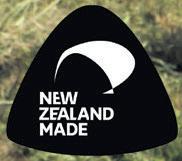




] by tracy Brown
] DairyNZ Chair
Farmers want, and DairyNZ is strongly advocating for, sensible rules which provide certainty, a focus on ecosystem and human health outcomes rather than just strict nutrient numbers, support for catchment groups and practical mitigations, and policy settings that enable both environmental progress and the future of our dairy sector.
What I’m hearing from those I talk with is that without a doubt, dairy remains a valued and valuable sector critical to New Zealand’s future economic success – with more enabling policy a shared interest between DairyNZ and the Government.
The Government’s proposals include updates to Te Mana o te Wai, simpler wetland rules, a review of nitrogen limits, and more flexible ways to set freshwater objectives. These changes could reduce red tape, but only if they result in rules that are practical and workable on farm.
Thank you to everyone who has joined our webinars, spoken with us at catchment meetings, or sent in your views.
Your input is important as the first phase of the Government’s freshwater consultation wraps up at the end of July and DairyNZ prepares its submission.
Another opportunity will come later this year, likely October, when we see the first draft of the new rules.
We support the consultation process and the goal of improving freshwater policy, but we are advocating for change that reflects onfarm realities and builds confidence for the future.
We support a shift away from rigid numerical limits. Instead, we want to see greater focus on ecosystem and human health outcomes. We support better use of tools like certified and audited Freshwater Farm Plans. More enabling rules around constructed wetlands is another priority.
The dairy sector is investing heavily in science-backed solutions to reduce its environmental footprint, including nitrogen, phosphorus, and sediment losses.
Proven practices like using plantain, catch crops, good farming practices and stacked mitigations through Low N Systems are already delivering results, such as the potential for nitrate reductions of up to 60%, with further gains possible with supportive policy.
These efforts show the sector’s strong commitment to improving freshwater quality while remaining economically viable.
DairyNZ has spent the past year preparing to provide a workable replacement to the existing policy. Our team has developed an alternative freshwater framework to support a constructive, science-led response.
We are pushing for four key outcomes: Practical, science-based rules; clearer focus on environmental and human health; farmerled, catchment-scale solutions that reward good practice; and a policy package trusted by farmers, communities and markets.
Beyond freshwater, we are involved in the wider RMA reform, where we have concerns. We’ve submitted on both recent Amendment Bills and the Fast-Track Approvals Bill, calling for enduring and enabling policy settings with pragmatic consenting pathways.
We are also working with regional councils to ensure the pause on new freshwater plans is used to improve, not shelve, the evidence base for environmental limits.
We know that right now, many of you are doing your best to interpret complex rules while managing the day-to-day realities of farming.
And with calving underway or around the corner, it’s all hands on deck.
In the meantime, keep doing the basics well: record nitrogen use, keep stock out of waterways, and implement your Freshwater Farm Plan.
Together, we can ensure the next generation of policy supports both a thriving dairy sector and a healthy environment. Thank you for everything you do.

Domestic maize silage and feed grain growers are set to benefit from New Zealand farmers opting for home grown supplementary feed options according to AgFirst Waikato consultant Raewyn Densley.
] by Kent Caddick
Densley said dairy farmers’ reliance on imported palm kernel expeller (PKE) as a supplementary feed faces headwinds amid shifting consumer preferences and environmental obligations to reduce greenhouse gas emissions.
“This will drive farmers to look for supplementary feed options closer to home, providing opportunities for domestic maize silage and feed grain growers,” Densley said.
“From a crop perspective and for the New Zealand arable industry that is quite an exciting thing, because crops like maize have much lower GHG emissions than PKE.”
Densley said significant expansion in the dairy industry between 1990 and 2020 led the national herd to lift by 2.6 million cows to 5 million and production to increase by 132 kg of milksolids/cow. An extra 730,000 hectares was converted into dairying, much of this arable land in Canterbury.
“This led to a massive increase in feed demand on dairy farms from 9.3 to 23.6 million tonnes of drymatter eaten a year, driven by more cows, more hectares, and more production per cow.
“Over time, we have gone from a pasturebased dairy farm system to one that is still pasture-based but is also quite reliant on other feed.”
About 15 to 20 per cent of what New Zealand dairy cows eat isn’t pasture, but supplementary feed including PKE, a byproduct of the palm oil extraction process, fodder beet and maize silage.
Use of harvested crops (eg, maize silage and feed barley), as well as grown supplements, (eg, fodder beet, kale and swedes) is increasing by 5.6 per cent a year. Import-

ed feed, particularly PKE is increasing even more, by 9 per cent each year.
“We think we are a pastoral dairy system and relatively self-contained, but 11 per cent of feed used to feed our cows is produced internationally.”
Globally, New Zealand is the biggest importer of PKE at 21.3 per cent, with most coming from Indonesia and Malaysia. Densley said that raises sustainability issues.
“Globally there is a western consumer trend away from palm oil, with a lot of big companies backing research into alternatives. Consumers are also turning away from
dairy products made from cows fed PKE, with Fonterra placing limits on PKE use by its milk suppliers.
“Consumers want milk products with a low GHG footprint but PKE has issues with deforestation, methane production from palm oil extraction and much higher carbon losses than pasture, maize silage and grain.
“While New Zealand farmers are just getting their head around their GHG obligations from a government perspective, the reality is that the world has moved on.
“Consumers are not just interested in onfarm losses they are also interested in em-
Homegrown: Maize crops have much lower greenhouse gas emissions than imported palm kernel expeller.
bedded losses associated with farm inputs.”
She said climate change means farmers will continue to need more than just pasture to sustain their herds but there is likely to be a move away from internationally-produced feeds.
“While buying in locally-produced crops will be the preferred option for some farmers, others may investigate dropping their stocking rate and cropping on farm.”
Information for this article was supplied by the Foundation for Arable Research. For more information go to: www.far.org.nz













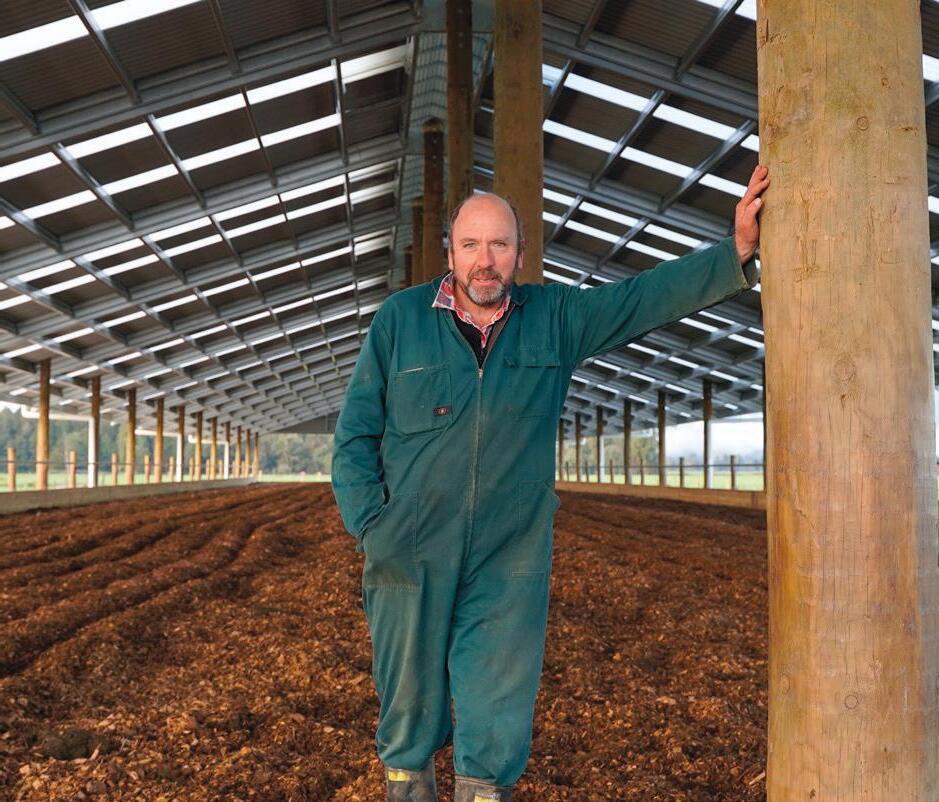












In any industry there are a few outstanding operators generating profits most can only dream of. Although not closely connected they share similar attitudes.
They don’t require endorsement of their peers and are not afraid to question accepted practices and modify their own behaviour when they think there may be a benefit.
They are not regular attendees at Discussion Groups and when they do it is to acquire any new information that they might gain from.
They do not look to align their thinking and practises with the majority but take an almost contrarian position, and their numbers based on our work seem to be steadily growing.
Different things are systematically tried and the outcomes measured and where there is genuine benefit they are adopted. This is a true scientific process.
Science is about challenging accepted thinking and yet somehow it is currently being used to defend outdated models and practises.
In very few instances is pasture growth today limited by a lack of phosphorus and potassium and yet those are the mainstays of mainstream fertiliser programmes.
The steady decline in annual pasture growth along with an increase in the requirement for pasture renewal is blamed on weather and climate when the primary reason is poor physical soil structures coupled with a lack of active beneficial biology.
Where these are not an issue money from the last twelve months is available for new investment rather than deferred maintenance.
Support for beneficial fungi and bacteria was identified 70 years ago by government research scientists and significant work carried out on the benefits however their findings never made it to broad acre use.
The most widely known research was the marked increase in beneficial earthworm numbers after liming. Where earthworms thrive other useful microbes also proliferate.
There is a simple and low-cost input that
can and does make a rapid and positive difference to physical soil structures and it doesn’t have to be imported.
Golden Bay dolomite is a natural deposit containing 24% calcium and 11.5% magnesium. It’s a proven soil conditioner and the benefits to animal wellbeing were endorsed by the late Emeritus Professor Tom Walker.
It is the most effective magnesium fertiliser available with a single application of 250kg/ha lifting magnesium levels in grass/ clover swards to between 0.22%-0.25%.
Animal calcium/magnesium related metabolic disorders are minimised in herds and flocks well-fed on these pastures.
Magnesium is also a known carrier of phosphorus and after the breakdown of accumulated dung during winter there is a plentiful supply of phosphorus for spring and early summer growth.
Improved physical soil structures allow plant roots to develop deeper accessing a larger pool of nutrient and trace minerals reducing the requirement for supplementation.
Pasture growth becomes more even throughout the year, less affected by frosts and dry periods.
Pugging damage lessens and soils more rapidly regain their optimum structure of 25% air and 25% moisture.
All beneficial soil dwellers require air to breathe, and they release carbon dioxide which being heavier than air stays close to
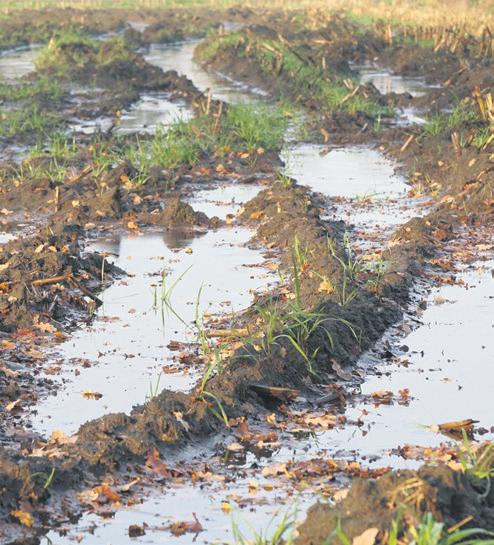
the surface helping drive the next round of growth.
Natural systems always tend to wellness and any encouragement that increases growth reduces expenses.
No single input necessarily makes a big difference, although it may, however the cumulative effect of multiple small changes can be significant.
For more information call 0800 436 566 (0800 4Dolomite)

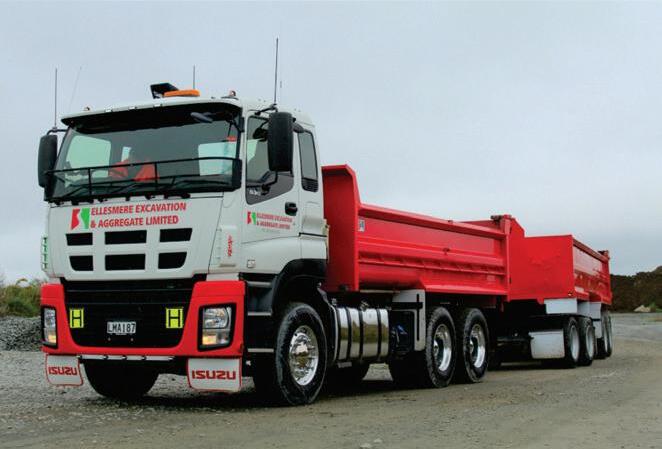



‘the steady decline in annual pasture growth is blamed on weather and climate when the primary reason is poor physical soil structures coupled with a lack of active beneficial biology.
Electrical problems or maintenance?
Use our unrivalled industrial electrical service for:
• Dairy sheds and irrigation
• Power reticulation
• Effluent control
• Dryers, conveyors and generators
• Switchboards and central supplies








In a first for the dairy sector DairyNZ, Fonterra, and LIC have combined the data from around 8,000 farms to investigate the link between physical farm performance measures and profitability.
] Article supplied by DairyNZ
The Emissions and Profitability Project used the three anonymised datasets to identify what distinguishes high-profit farms with lower emissions intensity and what the opportunities are for farmers.
DairyNZ Head of Data Science and Modelling Mark Neal said combining the data from the three partners was unprecedented.
“This is a first for New Zealand and shows our shared vision and commitment for a productive and profitable sector,” Neal said.
“Our farmers are among the most emis-
sions-efficient in the world, and research to develop ways of reducing emissions is key to helping them maintain that position.”
DairyNZ Chair Tracy Brown said the project found that the key to high profit and low emission intensity is using low footprint feed to achieve good milk production.
“Importantly for farmers, it shows that all farms have opportunities to lower their emission intensity, without compromising profitability,” Brown said.

Fonterra Strategic Advisor Malcolm Ellis said the data showed farmers with high prof- its and lower environmental impacts used their resources much more efficiently.
“The efficient and profitable operations were not necessarily on farms that were smaller, square, simple or on the best soil type in the region either. Even farms with comparatively lower pasture growth potential could be low emissions and high profit,” said Ellis, who is a fourth-generation farmer who spent more than a decade at LIC before joining Fonterra in 2023.
“The project clearly identified the significant benefits of feed utilisation and the key drivers of farm efficiency. It showed that working smarter with what you have can help farms be both more profitable and better achieve environmental goals,” Ellis said.
LIC Chief Executive David Chin said the project demonstrates what can be achieved for farmers through collaboration between industry groups.
“Achieving the right balance between productivity and better environmental outcomes is important for our sector today and for the future. This collaboration is a great example of the industry coming together to give farmers useful insights to help them achieve that balance.”


50 HEAD OR 1,000 HEAD, WE’LL HELP YOU STAY AHEAD.


Joint effort: A combined research project by DairyNZ, Fonterra, and LIC shows farmers with high profits and lower environmental impacts use their resources more efficiently.
The research found a few different ways farmers could increase profitability while reducing emissions intensity, including:
• Understanding their farm’s data, and where their next opportunity is to increase profit and reduce environmental footprint
• Growing and using more homegrown feed eaten per hectare
• Optimising cow performance through better reproduction, cow quality and herd structure
• Using imported feed smartly, to boost output, not costs.
The research is the first stage of the project with the next phase looking to improve liveweight estimates and deepen the sector’s understanding of the drivers between profit, production, and environmental footprint.
DairyNZ, Fonterra and LIC are working together to share the insights and takeaways with farmers as well as with the rural professionals who advise them, including through webinars, podcasts, articles, and other direct-to-farmer channels.
For more on the project go to: www.dairynz.co.nz/ research/science-projects/missions-and-profitability
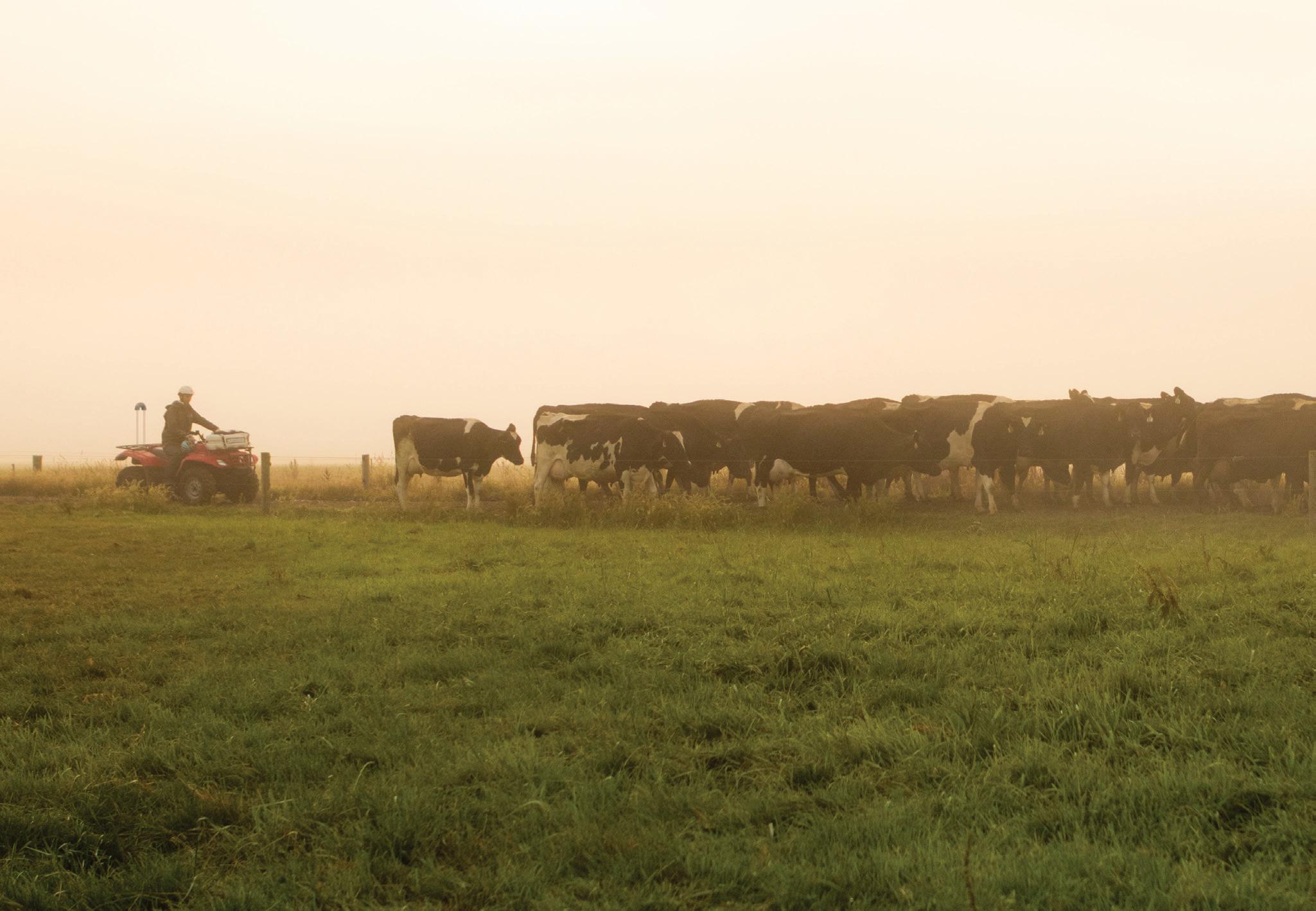

We’re here for the good of the country. SUPPORTING DAIRY INDUSTRY EVENTS AND GIVING GREAT ADVICE.
At FMG, we’re here to help dairy farmers stay informed and get ahead. That’s why along with offering useful advice and tips, we support dairy workshops and seminars happening right across the country. Because at the end of the day, learning the latest techniques and developing new skills will help you make positive changes and better decisions. So take the opportunity to stay ahead at a dairy event near you. Head to fmg.co.nz/dairyevents to find out more.
Good practice irrigation isn’t about ticking boxes. It’s about making the best use of a valuable resource, and setting yourself up for a productive, compliant, and cost-effective season.
]Article supplied by Irrigation NZ
First, make sure your irrigators are still safely parked and anchored.
Canterbury’s nor’westers don’t care what month it is. If you’re not across the ‘Park, Point, Anchor’ guidance, check it out, and talk it through with your staff. Many risks come to fruition because of “human factors” like poor communication under pressure.
Next, plan well ahead for your spring startup. Have you reviewed your consent limits and reporting requirements? A small, unwarranted change to control settings could put you over your peak flow or annual allocation. Winter is the time to check.
Knowing your water source reliability and limits helps shift from a “just-in-case” to a “just-in-time” irrigation approach that keeps water and nutrients where they should be.
Look over last season’s scheduling records. We had a variable run with weather last summer, and you likely made adjustments as the season unfolded. But those settings might not suit this spring. You may even need to look back a few years for similar conditions and remind yourself what worked, and what didn’t.
And think about your soil. Have you really taken time to understand its layers, texture, and structure? It’s tempting to focus on the top 20 cm, but your root zones, and water holding capacity, often go much deeper.
Mechanically, give everything a thorough once-over – something you should do every year. Are the nozzles intact? Hangers in good nick? Tracks clear? Sand traps cleaned? Pumps serviced? And don’t forget to check for unwelcome winter guests in the pump shed and always take care around electrical panels.

Also don’t skip a full system performance assessment. You should be aiming for a deep check at least every three years, so get a qualified assessor in.
A full assessment, not just a quick bucket test, will give you much more insight into your system’s true performance.
Calibration gives a snapshot, but a comprehensive assessment checks everything from distribution uniformity, depth applied, and application rate, as well as energy efficiency.
Having a up to date documented assessment is also a great asset when you’re audited as you’ll be able to show you’re across your responsibilities.
Turn your good decisions into great outcomes. Winter is your chance to sharpen up and connect with the people who’ll help you make the season ahead a success.
IrrigationNZ is a national membership organisation that looks after the interests of irrigating farmers, growers, and industry professionals who service them. For more go to: www.irrigationnz.co.nz

Be ready: Plan



While winter is sometimes talked about as ‘down time’, but we all know there’s no such thing. And when it comes to working the land, it’s often a case of ‘the more we prepare in winter, the better the results in summer’.
Whether those risks are low consequence and unlikely, or high consequence and likely, winter’s a good time to turn attention to a risk matrix and reflect on your system, your decisions, and how ready you really are for the next season.
] by stephen McNally ] IrrigationNZ Principal ] Technical Advisor
So, as we face winter’s wet and grey conditions, with irrigation largely off the radar, it’s worth setting aside some time to look both back and forward.
Challenge yourself: How did your irrigation system perform last season? Are you confident it’ll deliver for the one ahead? Have you weighed up the risks of just going with a ‘she’ll be right’ approach?
I’ve often written about taking a risk-based approach to irrigation management, and it’s a core part of many of the training programmes we deliver. Risk management simply makes good business sense: it’s a way to understanding what might stop you achieving your goals and having plans in place.
Question yourself to make planning easy
Did I make good irrigation scheduling decisions last season? Did my system perform as it should?
Good irrigation management starts with your judgement and your intuition is a valuable tool. That said, it should be backed by solid information. Did you rely on sound soil moisture data? Did you know your system’s limits? Did you factor in your soil types, crop needs, and consent conditions? And when you made the right calls to irrigate just in time, did the system perform as expected?
If you are honest and the answer is “I was guessing,” now’s the time to figure out where things fell down, whether that’s on your staff, your advisors, or your service company, or you. Getting clear on who’s responsible for what is key to reducing risks and lifting performance.
NZ Dealership
Premier Chinese Brand

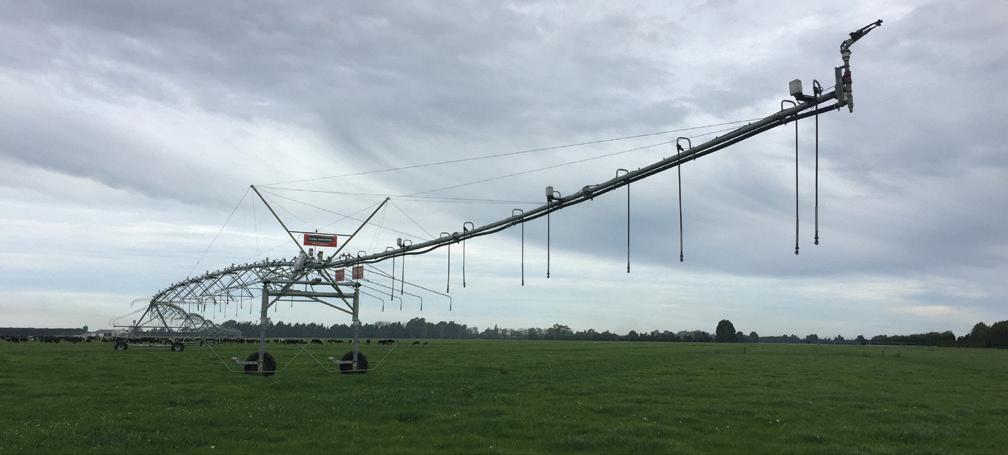
Be prepared: Winter’s a good time to turn attention to a risk matrix and reflect on your irrigation system, your decisions, and how ready you really are for the next season.
communication with others matters too
Having good information is only part of the picture – it’s just as important to have clear communication with everyone involved. A plan in your head is no use if your team, service providers and advisors aren’t on the same page.
Risk management is a team effort. It means sharing your thinking, listening to feedback, reflecting on it, and making sure your decisions land with the people who need to carry them out.
Good preparation will help you with other changes coming too
You’ll already be familiar with your Farm Environment Plan obligations, and the possible shift to Freshwater Farm Plans soon.
These changes are less daunting if you’ve already got a grip on your risks, opportunities, and good practice actions.
IrrigationNZ supports a farmer-focused Freshwater Farm Plan framework valuing your judgment and flexibility. Good irrigation and team communication ensure success despite regulatory changes.

It might mean picking a quiet part of the season for irrigator operators, reviewing last season’s scheduling decisions with your advisor, or briefing your service tech on key risks you’ve identified.
Good communication turns individual actions into a cohesive approach – and in my experience, it’s often the difference between a smooth season and a stressful one.


New and replacement pivot irrigators
Re-piping for Valley, Zimmatic, Western, Irrifrance (other brands upon request)
Replacement pipes, joints, angles and parts
Genuine UMC and Komet pivot components
Other advantages and innovations, too many to list here
Julian p. (027) 263 0192 e. julian@irrisource.co.nz
Alby p. (027) 473 7473 e. alby@irrisource.co.nz
Good practice irrigation isn’t about ticking boxes. It’s about making the best use of a valuable resource, and setting yourself up for a productive, compliant, and cost-effective season.
Turn your good decisions into great outcomes. Winter is your chance to sharpen up and connect with the people who’ll help you make the season ahead a success.











The need for real-time data for both farm management and compliance is becoming increasingly important.
Often implementation of these systems is considered a compliance ‘box ticking’ exercise but treating them as such and not actively using the data results in lost opportunities. Water use, power, soil moisture and weather data are vital inputs into any Farm Management system. Often, they are used in isolation but combining them allows for reporting and benchmarking to ensure maximum efficiency and profitability.
Proof of collection and use of this data is often necessary to ensure an A grade FEP Audit result.
As resource consents come up for renewal this data will be vital as a pre-requisite for a robust and comprehensive analysis of future irrigation water needs is good quality monitoring data. Data is needed to prove what’s happening on farm is appropriate. It’s no longer sufficient to be a good irrigation manager; you also need to demonstrate it. “Show me the numbers!” Without them, how will you justify your water allocation? If you’re to prove what you need, and not lose ground, you need to be keeping the following data for your property:
• Accurate water meter data, with no missing data. Water meter records on their own do not demonstrate reasonable and
efficient use of water. At the moment, Councils are accepting this in many cases, but this potentially disincentivises efficient use of water, so Councils are very likely to start requiring further evidence such as analysis of soil moisture data in the future when they realise that accepting water meter records alone could result in perverse outcomes.
• Continuous soil moisture monitoring records – at least once-a-day measurement.
• Evidence that the irrigation system is well maintained and applying water uniformly. Soil moisture measurements are made at a point, and there’s an assumption that it’s representative of a broader area.
• The number and location of soil moisture probes should be appropriate to cover the different soils and irrigation types on the property, if relevant.
• Good quality rainfall records, if your farm isn’t close to an official rainfall station.
• Good records on the area of land actually irrigated.
• If the water take is subject to restrictions based on water level / river flow, it’s worth having a record of these. A future water allocation should be based on what you would have needed if you were able to take it, not what you were actually able to take.
• Secure and reliable data storage. Good

Data: The Aqualinc MyIrrigation, powered by SCADAfarm system, is a good example of an advanced reporting tool that can provide more than just compliance.
numbers are no use if you can’t find them later!
The message is clear; collect and keep irrigation data now, you will need it.
Your telemetry provider should have already ensured that your systems are up to date and will not be affected by the 2G/3G cellular service shutdown later this year.
As this could affect compliance with your consent conditions, we urge you to check this is all covered. If not, you may take this opportunity to assess your current provider’s performance and consider changing to
a provider who may be better suited to your requirements and be able to provide more support and also better utilisation of your data for broader farm (and in particular water) management.
All Aqualinc telemetry client’s systems were upgraded last year. The Aqualinc MyIrrigation, powered by SCADAfarm system, combined with the depth of knowledge and support that the team at Aqualinc can provide is a good example of an advanced reporting tool that can provide much more than just compliance.





IRRIGATE WITH CONFIDENCE. IRRIGATION SYSTEMS REMOTE MANAGEMENT PRECISION VRI











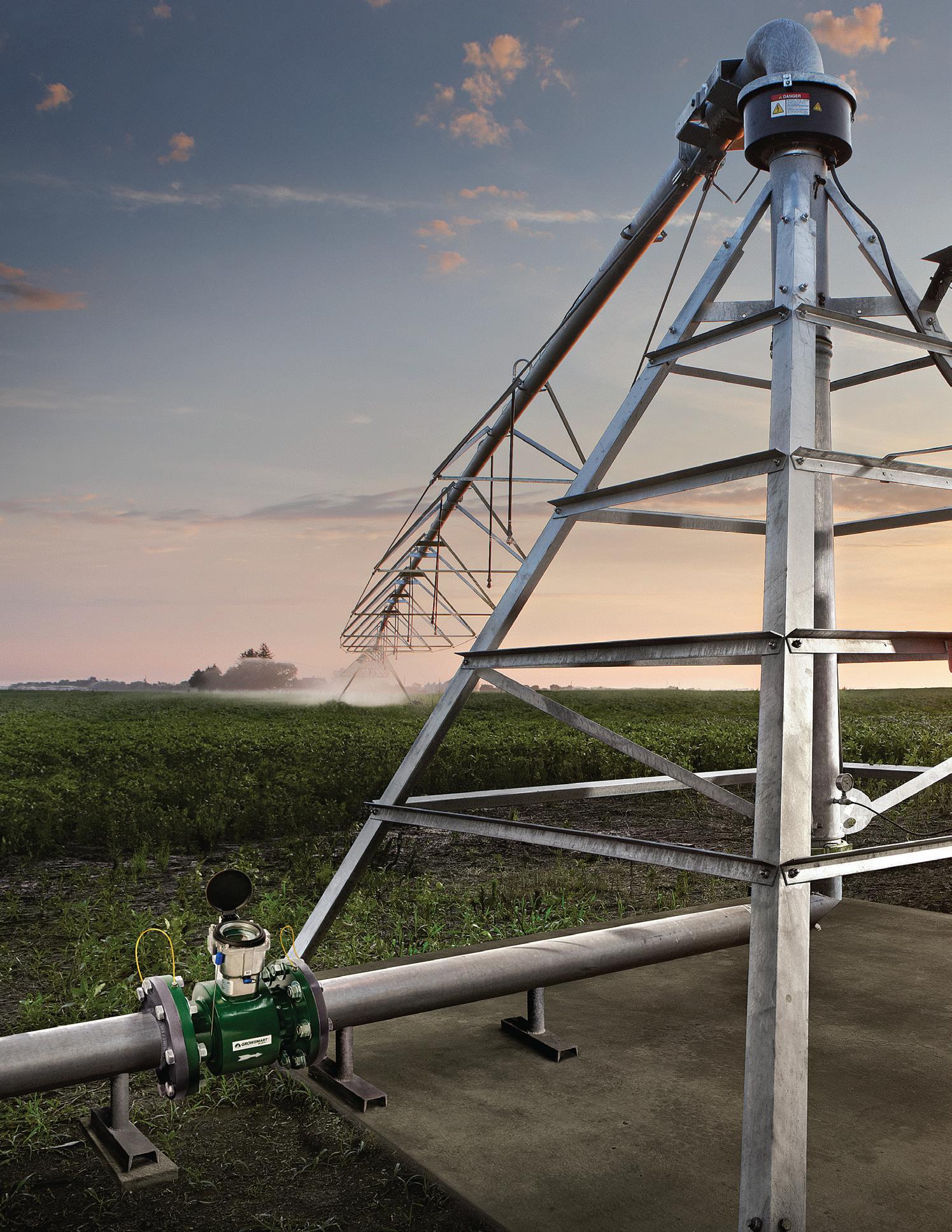
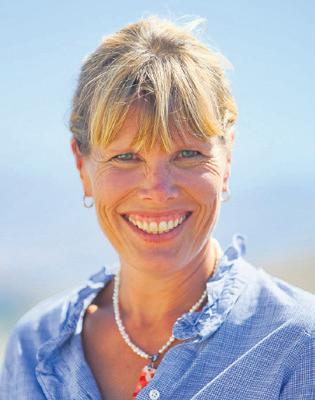
] by Nicky Hyslop
It is always a real privilege to talk to farmers at our annual round of Director Roadshow meetings. These meetings are an opportunity to update levy payers on the work Beef + Lamb New Zealand is doing on their behalf, answer their questions and listen to their concerns.
] Director Beef + Lamb New Zealand
By far the biggest chunk of farmer levies is being invested in championing farming excellence, which reflects the organisation’s focus back behind the farm gate.
I also updated farmers on B+LNZ’s investment priorities under its refreshed strategy. These are investment in research and innovation and then extension – and this means boots on the ground, delivering differ-
ent types of extension to reflect our different styles of learning.
I also covered policy and advocacy and how we engage with farmers and use data and insights to shift conversations, and engage with other organisations including DairyNZ, Federated Farmers, Deer Industry NZ and the Meat Industry Association.
We have a lot to be positive about as we head into a new season with a strong outlook for red meat and a booming dairy industry, all of which flows through to rural communities and the wider economy.
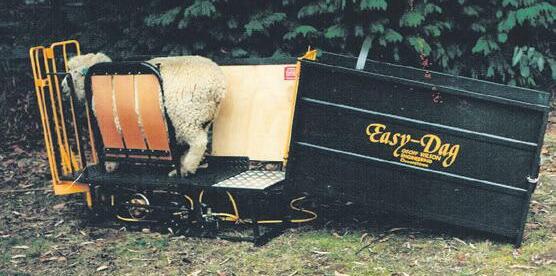
The first part of winter was challenging with on-going wet weather, but what we experienced was nothing compared to what our colleagues in the Tasman region have had to deal with and my thoughts are with them as they face the aftermath of the severe weather.
As we head into lambing, I encourage farmers to tap into the Lamb Survivability resources on B+LNZ’s website, particularly the recently released podcasts.
Average lamb mortality rates sit at around 15% and this is lost opportunity. Our ewes are fertile and for most of us, it’s a matter of clos-

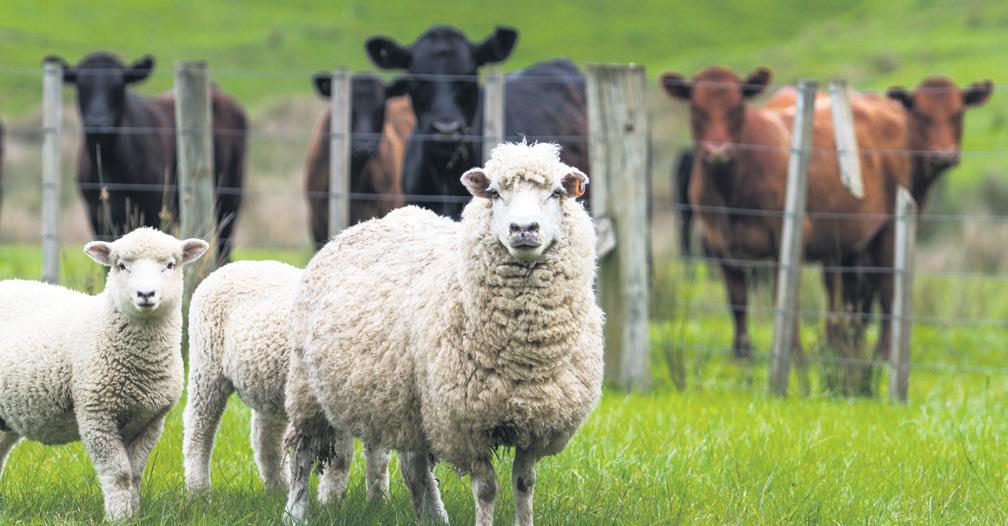
ing the gap between our scanning and lambing percentages.
This is an area of focus for B+LNZ’s Research and Innovation team and while we all know many of the factors that affect lamb survival, ewe body condition being a major one, it’s not always easy to get everything right at a challenging time of the year.
Lamb Survivability is also one of the topics being examined in detail through B+LNZ’s Focus Groups.
These groups are a small group learning initiative introduced into the extension programme as part of B+LNZ’s refreshed strategy.
They are topic focused, and outcomes driven, giving farmers the opportunity to learn
from other members and subject matter experts. These groups are deliberately kept small to ensure everyone gets a chance to share insights and learn from each other.
Each group is a closed group for the duration, usually over two years, with eight group days in total.
The Focus Groups already up and running are covering animal production, integrated parasite management and financial management.
I really encourage sheep and beef farmers to consider joining one of these groups when the opportunity becomes available. Keep an eye on the B+LNZ events page for more information.
For prevention and treatment of calf scours caused by Rotavirus 6 &10, Crypto. Rotagen Combo is anti-biotic FREE and GMO FREE.
Enerlect is a high energy source electrolyte that also supplies all the important electrolytes lost during diarrhoea casued by infectious agents or due to a nutritional imbalance.
Virucide, biocide and deodoriser for all surfaces on farm including farm sheds and animal housing such as calf pens. Vetsan is active against all the important pathenogenic micro-organisms that can cause calf scours including Rotavirus, Cryptosporidia, Salmonella, E coli, Coronovirus. Also effective against Mycoplasma Bovis.
Enerlect and Rotagen Combo are registered pursuant to the ACVM Act 1997, Enerlect A9276, Rotagen Combo A9928




As we gear up for the velvetting and chilled venison seasons, which will be upon us before we know it, some good news out of North America as results from the first year of the three-year North American Retail Accelerator (NARA) programme for New Zealand venison have come in.
The programme delivered $25.9 million in FOB export revenue sold into North American retail channels for the year, against a project objective of $10.4 million annually.
It also saw 393 tonnes of leg cuts, historically more difficult to sell compared with the more in-demand middle cuts, exported into North American retail against a project objective of 300 tonnes, as well as 1,311 tonnes of venison trim and other, against a project objective of 1,300 tonnes.
Momentum is strong as we head into the programme’s second year, starting 1 July.
“These types of projects always take a bit of setting up, but we hit the ground running, and it’s full steam ahead into Year Two,” says Deer Industry New Zealand CEO Rhys Griffiths.
“The NARA programme really is a great example of government, industry good and commercial operators all working toward a common goal but each focusing on what they do well.”
DINZ Market Activation Manager Virginia Connell spent time in the US market in May
and June and noticed an increased awareness around New Zealand venison, which competes in the same premium protein market segment as bison.
“The educational materials and promotional activities that the companies, both our New Zealand exporters and their US-based partners, are putting out there have certainly raised interest and awareness among distributors, who ultimately represent demand from the end consumer,” Connell says.
“With new products either in development or fresh to market, localised packaging innovations now in use, and influencer campaigns underway, I am excited to see the good work done in Year One spark further growth.”
At the July Cambridge meeting of the DINZ Board, the Board confirmed proposed changes around VelTrak Terms of Use for the upcoming 2025/26 velvet season.
The changes – with input from the Export Licensing Working Group and legal advisers – are a first step towards improved levy compliance, traceability and commercial integrity. Long-term, the goal remains an export licensing model for velvet.
The changes to the VelTrak Terms of Use include eligibility of use based on settling any outstanding levies; the publication of all approved VelTrak buyers for greater transparency; suspension triggers for inappropriate commercial behaviour; a graduated suspension framework, with indefinite suspension a possibility; and public transparency of all suspended entities. Further details can be found on the Deer NZ website.
Staying with the DINZ Board now, as DINZ welcomes two new directors to the DINZ Board. Manawatu deer stud breeder and animal scientist Simone Hoskin joins the Board as a producer-appointed director, while Duncan NZ General Manager Rob Kidd joins as a processor-appointed director. Hamish Fraser returns to the Board as a producer-appointed director.
Finally, DINZ would like to extend our thanks to North Island vet and Wormwise programme lead Ginny Dodunski and South Island vet and Wormwise facilitator Lorna
‘the changes – with input from the Export Licensing Working group and legal advisers – are a first step towards improved levy compliance, traceability and commercial integrity.
Humm for sharing their expertise as part of our recent webinar on Parasite Management – the second in DINZ’s bi-monthly webinar series. The webinar was recorded and can be viewed on the Deer NZ website.


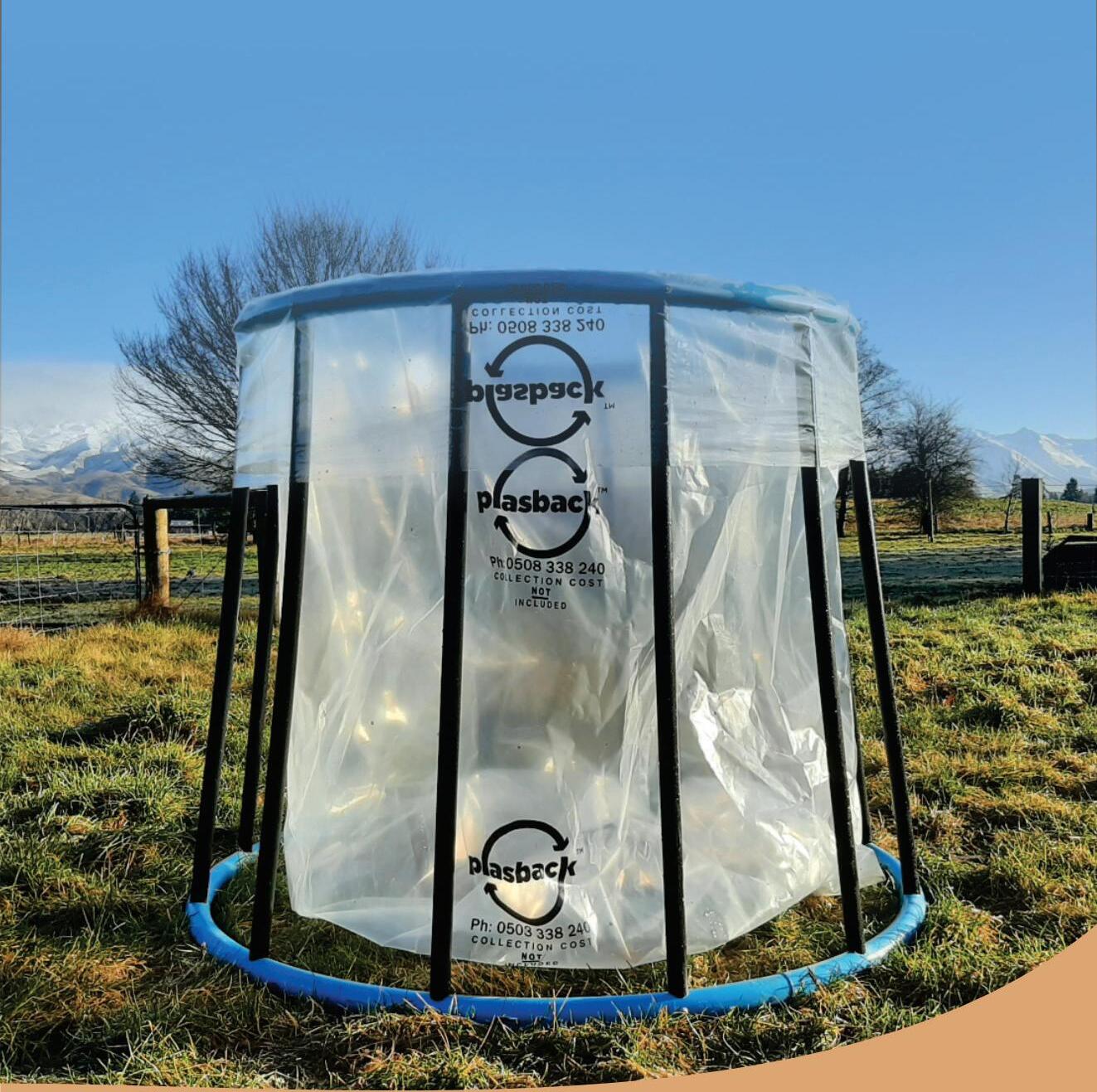










Farmers at Fieldays got a look into the future with Chinese truck brand JAC rolling out its cutting-edge T9 Hunter PHEV, a high-performance, plug-in hybrid ute.
]Article supplied by JAC NZ
On display at Fieldays was a pre-production prototype T9 Hunter PHEV ute which gave farmers a first look at what could be coming down the pipeline, and what JAC NZ says is what the brand’s truly capable of.
The T9 Hunter PHEV promises serious punch, pairing a next-gen 2.0-litre turbocharged petrol engine with dual electric motors to target a massive 1000Nm of torque, outmuscling the BYD Shark 6, one of the latest PHEV utes to arrive on the NZ market.
Still in pre-launch development, the high-torque hybrid system is designed to drive over 100km on electric power alone and a whopping amount more in ‘hybrid’ mode.
JAC NZ General Manager Andrew Craw said the T9 Hunter PHEV’s local launch is yet to be confirmed.
Craw said before committing to the new model that they will be undertaking “loads of Kiwi testing on NZ soil” as well as listening to Kiwi feedback at Fieldays.
“The T9 Hunter PHEV shows what JAC can deliver in the world of electric and hybrid workhorses. But first we want to hear what Kiwis think and get the PHEV out and about on and off NZ roads for rigorous testing.”
The T9 Hunter PHEV might be an attention grabber with its orange paint job, but JAC is rolling in with a line-up that lives up to the name ‘JAC Of All Trades’.
Already available in New Zealand is the highly acclaimed top-of-the-line T9 diesel ute, along with the brand’s light duty EV and Cummins diesel trucks, which spotlight JAC’s growing footprint in the New Zealand market.
That footprint is getting bigger too, with three new dealerships opening in Napier, North Shore Auckland, and Hamilton.
They join existing sites in Botany, New Plymouth, and Christchurch, plus nationwide support for JAC Light Duty Trucks via the Southpac Truck network, covering both 100% EV and Cummins Diesel models.
“Fieldays was a big moment for us, not just with the T9 PHEV, but with new sites opening too,” Craw notes.
“Unlike the carbon footprint of this ute, our footprint’s getting bigger in all the right places.”























New Holland is expanding its T7 tractor range in New Zealand with the launch of a new Tier 3 long wheelbase configuration, meeting the needs of farmers looking for a reliable, no-fuss workhorse.
The T7 Tier 3 model was developed following extensive consultation with New Holland customers to deliver a straightforward solution for operators that reduces complexity without compromising on performance.
CNH sales manager David Knowles said the new model was built with the power to perform and designed for functional versatility across a wide range of farming operations.
Available in 180hp, 200hp, and 220hp, the new T7 model offers a choice of Power Command or Auto Command transmissions, multiple spec levels, and optional technology capabilities. Loader compatibility also adds to its versatility across different farming operations.
Knowles said the new T7 model came in three different configurations.
The base level tractor features a Power Command transmission, mechanical remotes with classic cab. The next level up has electric remotes also in a Power
“There’s no AdBlue required which is something new for this T7 range, making it easier to use and maintain. It’s a great all-rounder that delivers power and performance while keeping it simple,” he said.
Command transmission, while the top level offers Auto Command with electric remotes, which can be optioned from the factory GPS-ready.
“Whether it’s a premium connected machine or the new versatile Tier 3 platform alternative, we now have a complete offering to satisfy every customer,” Knowles said.
The T7.245 model was unveiled at the New Holland site during Fieldays earlier this year, drawing strong interest from attendees.
For more information, visit www.newholland. co.nz












































